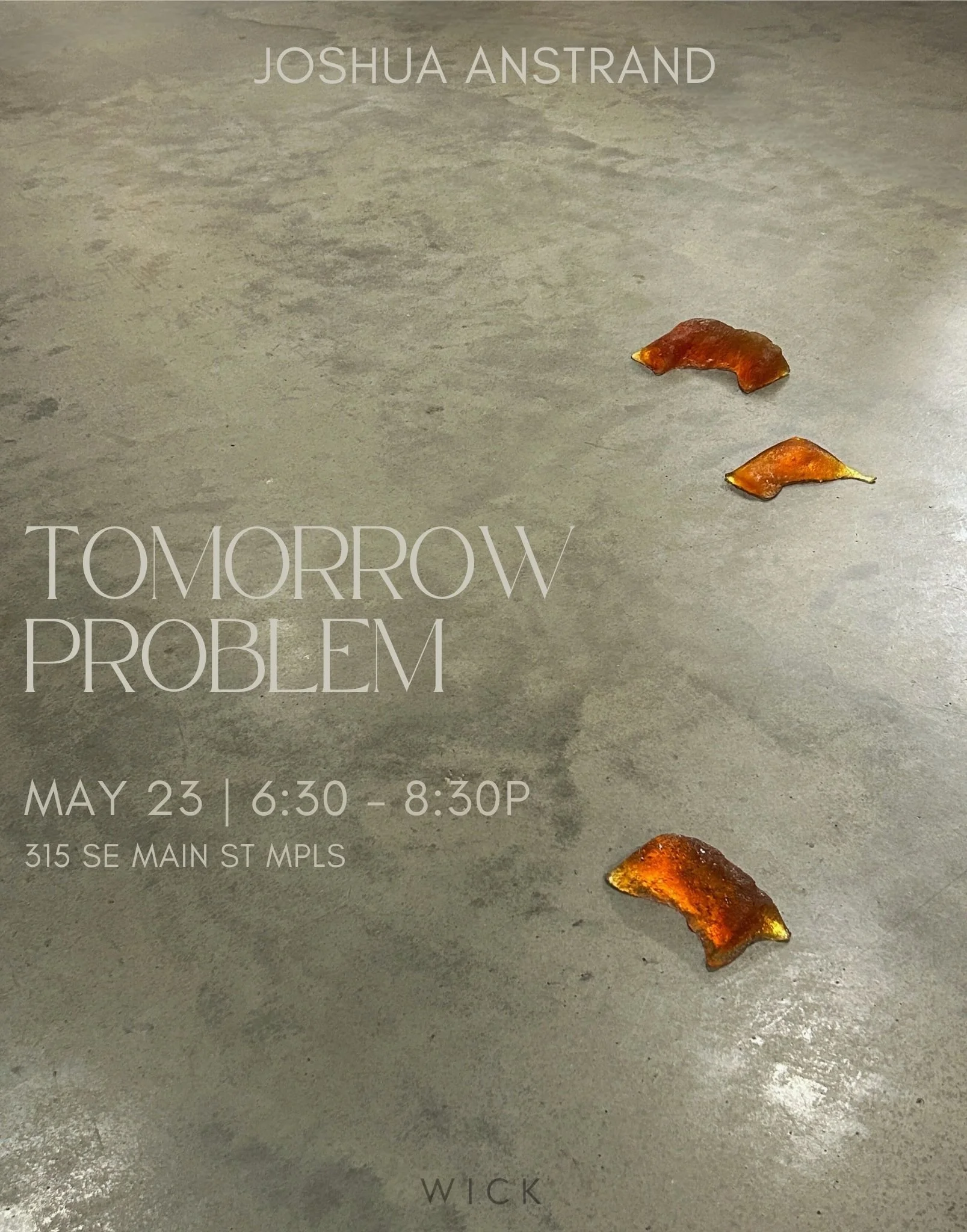


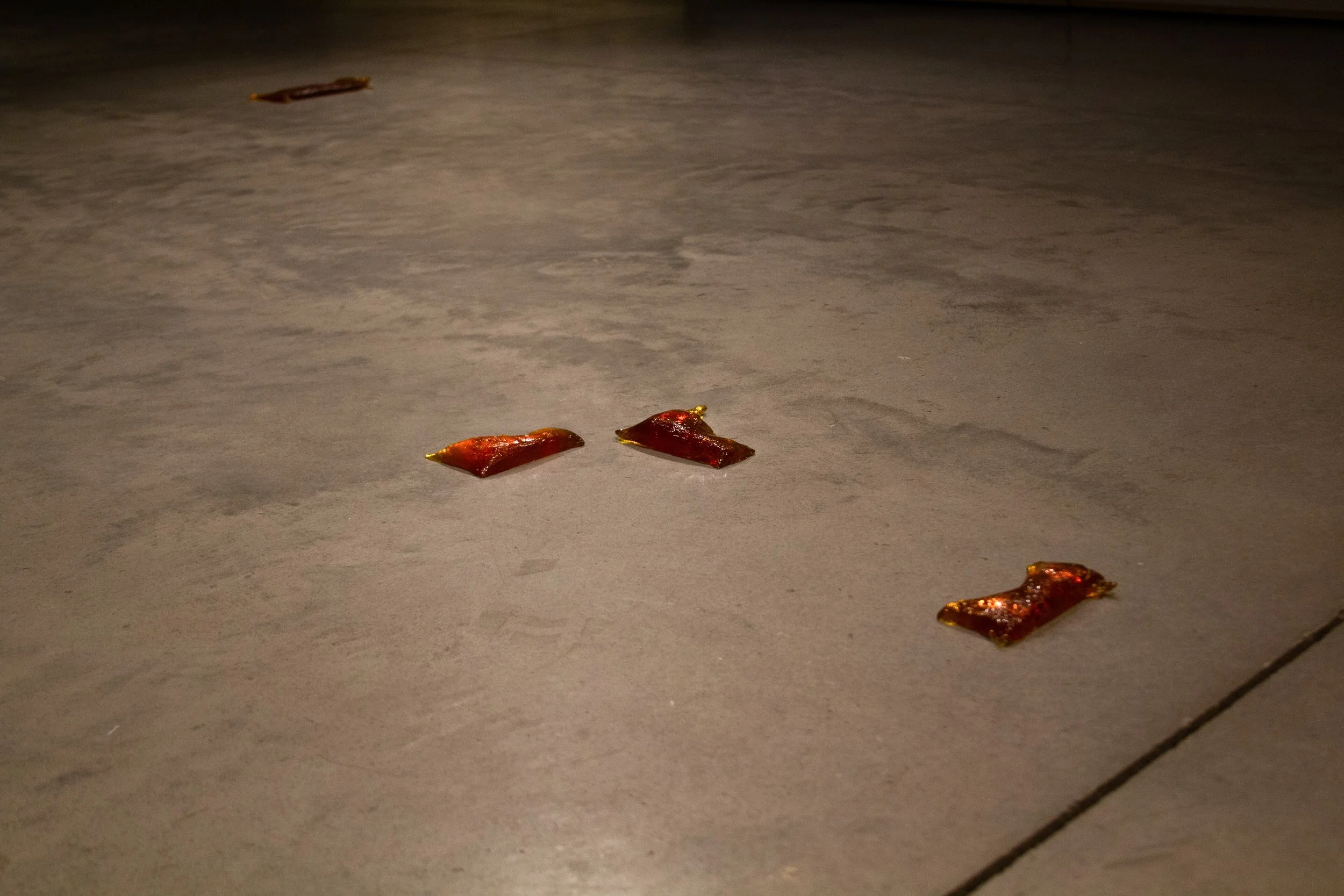
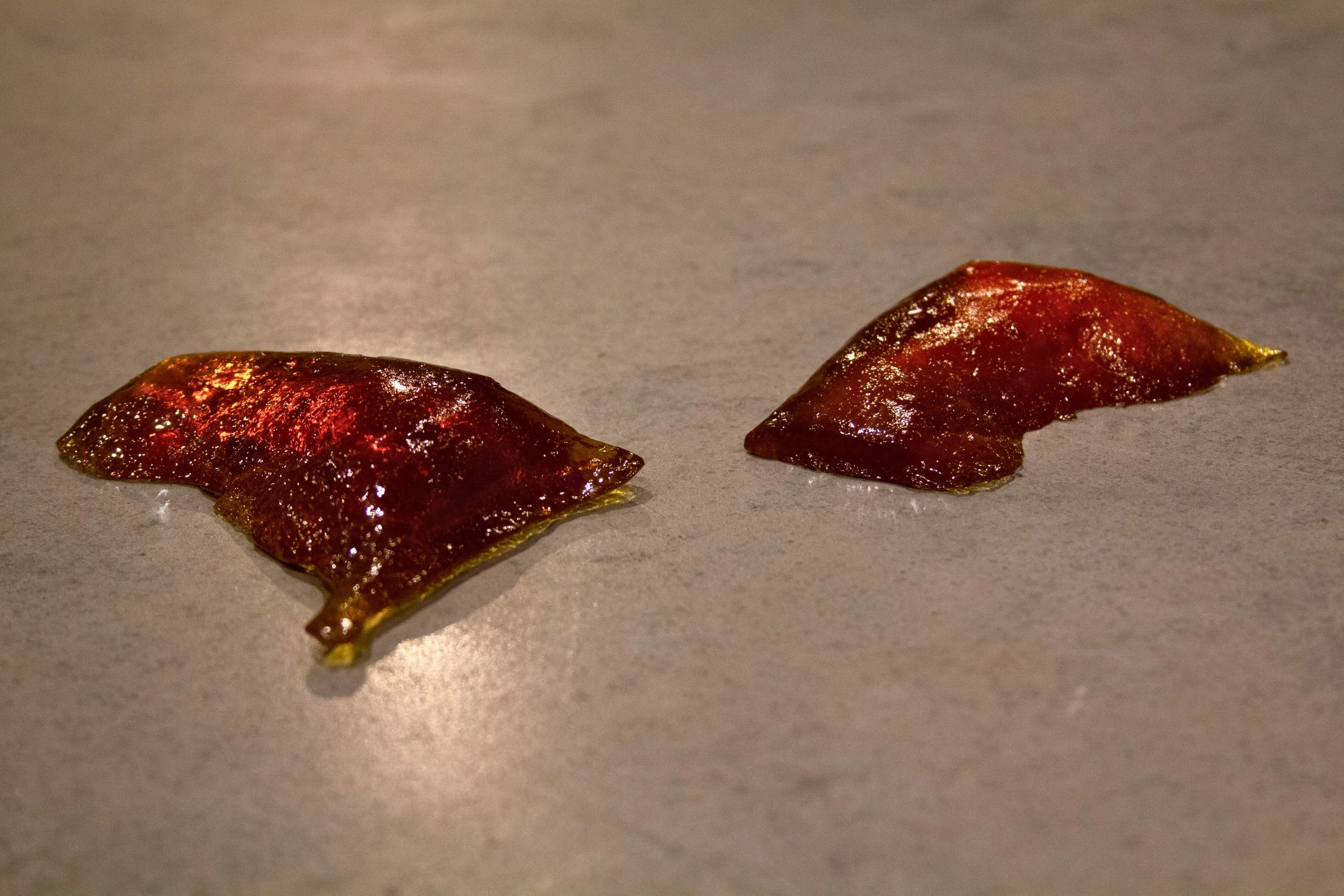


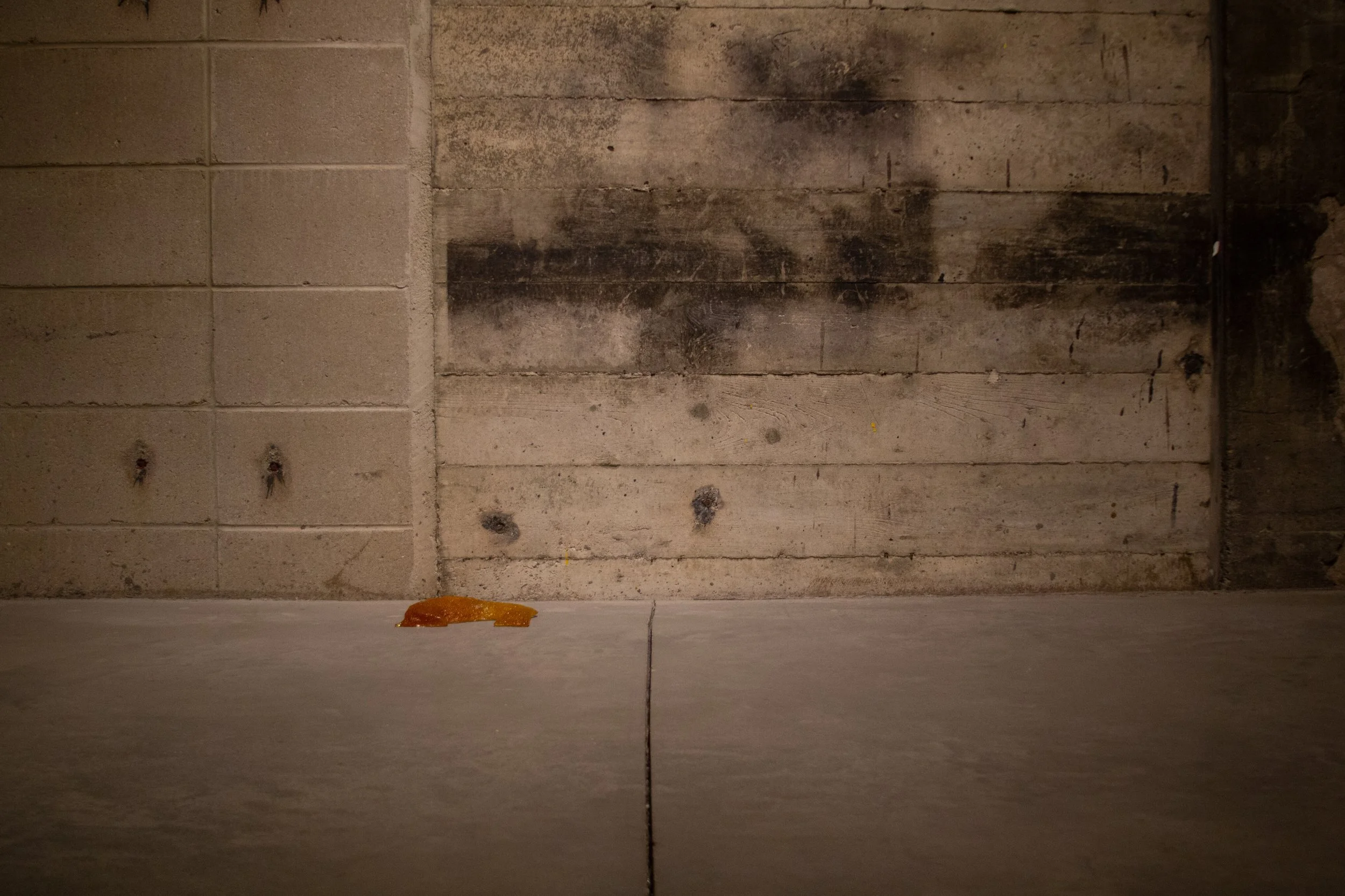


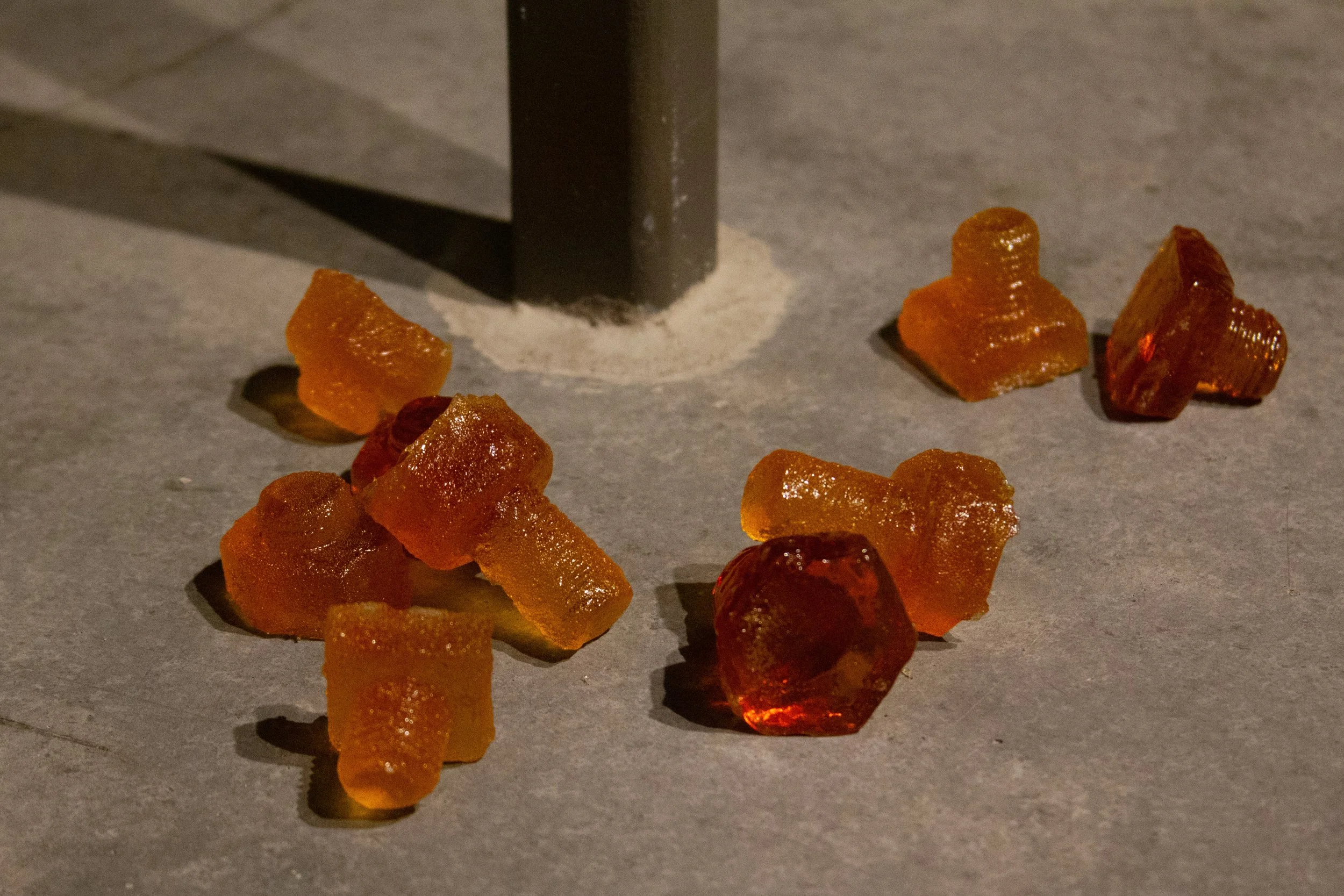


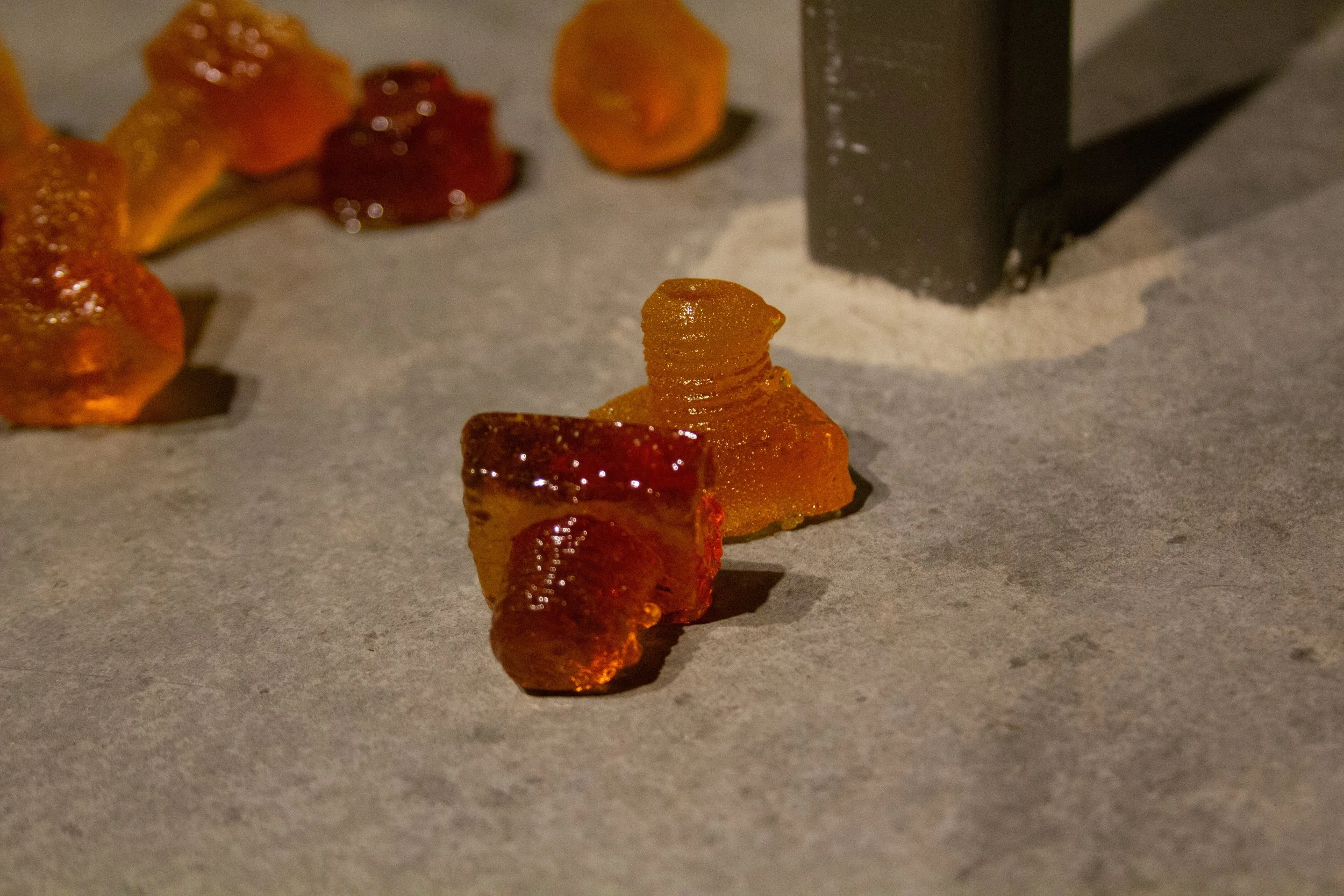



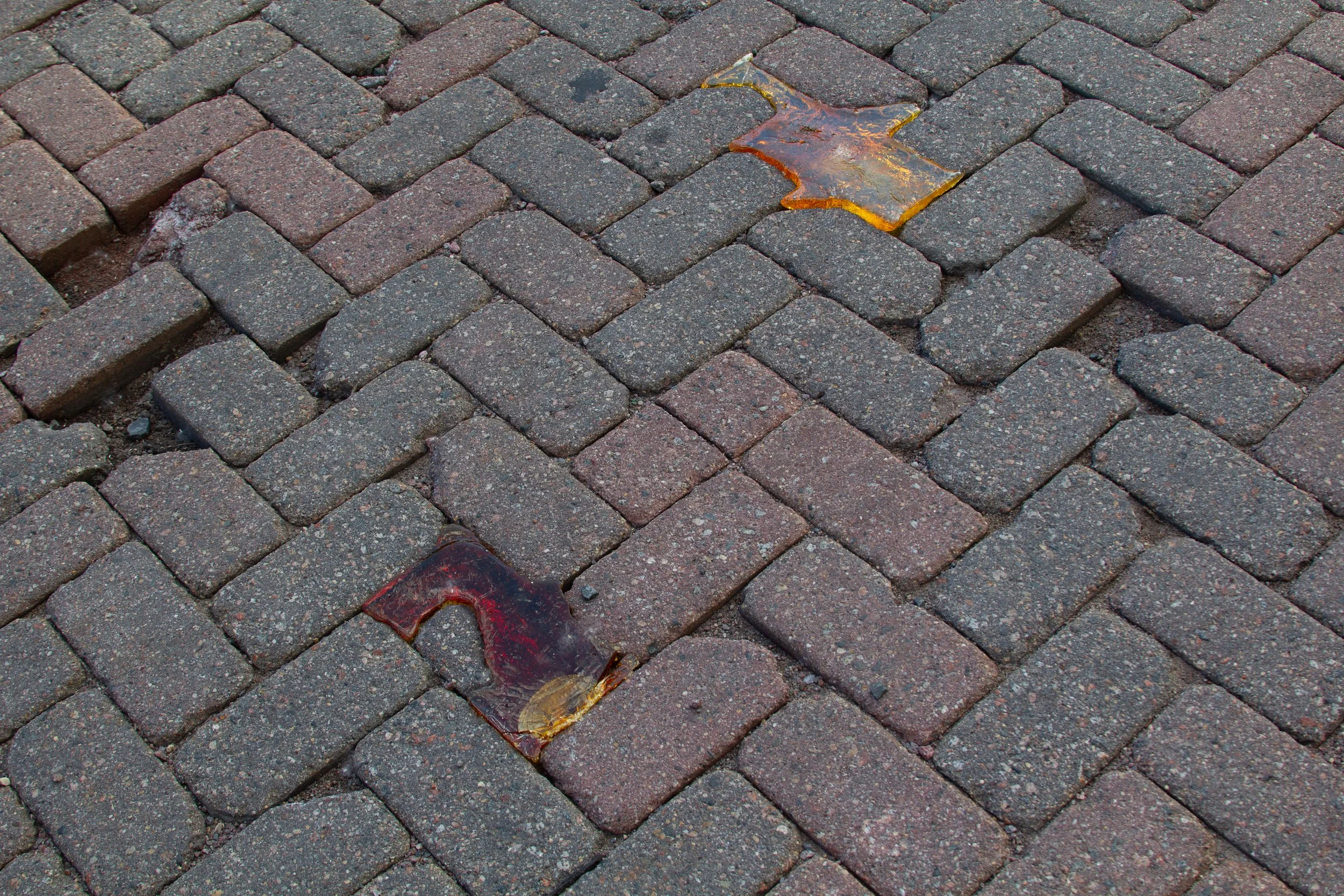

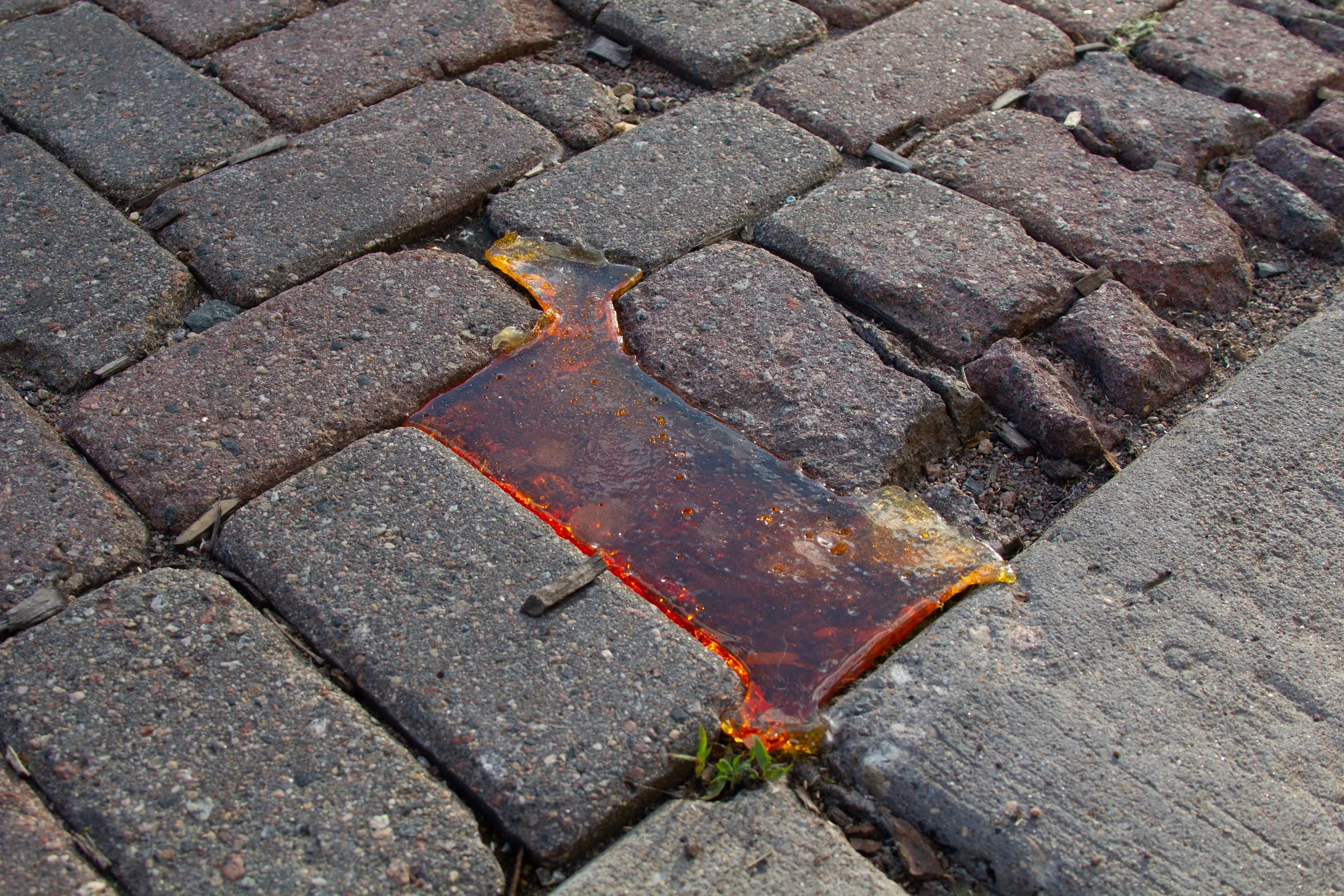
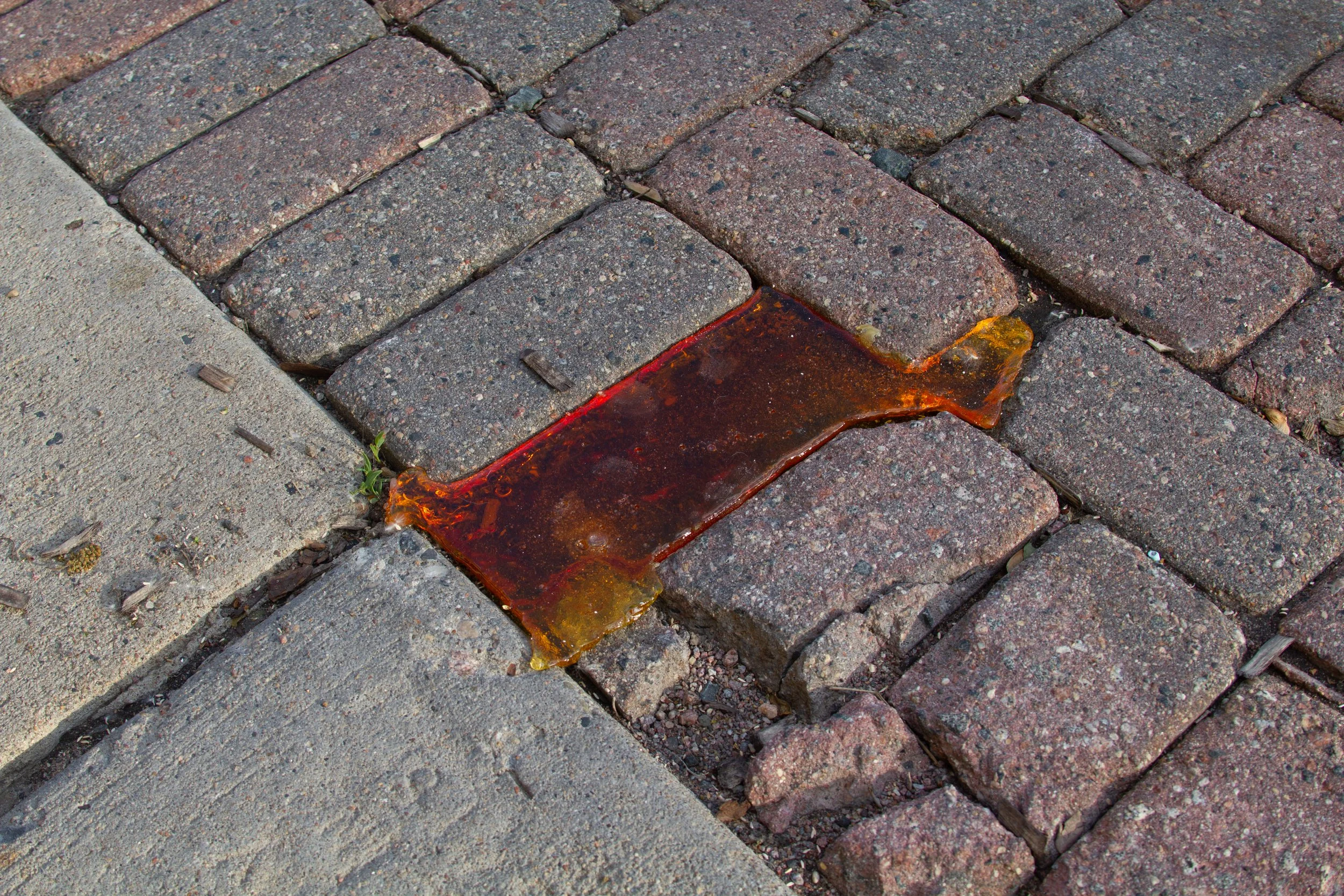
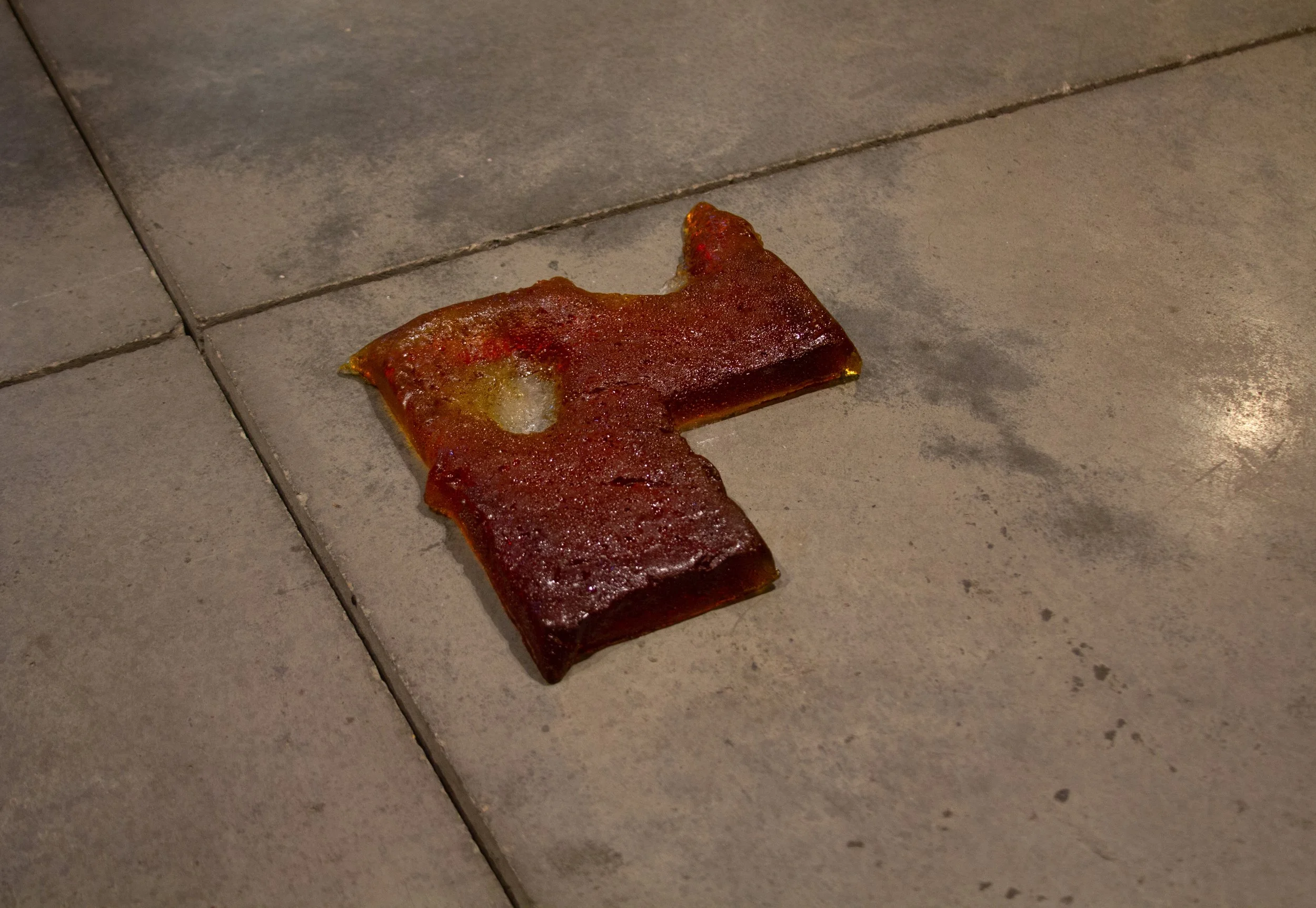


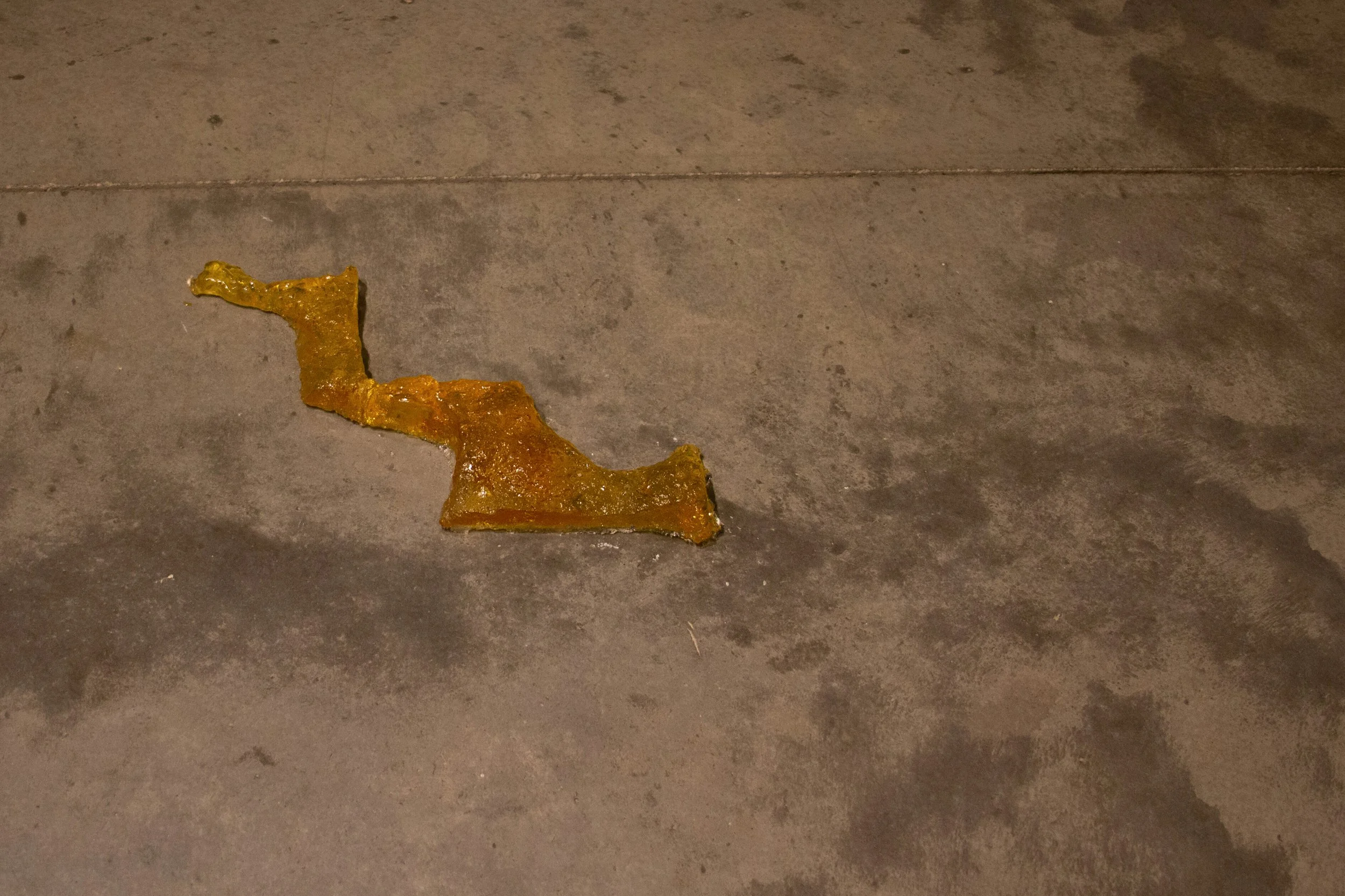
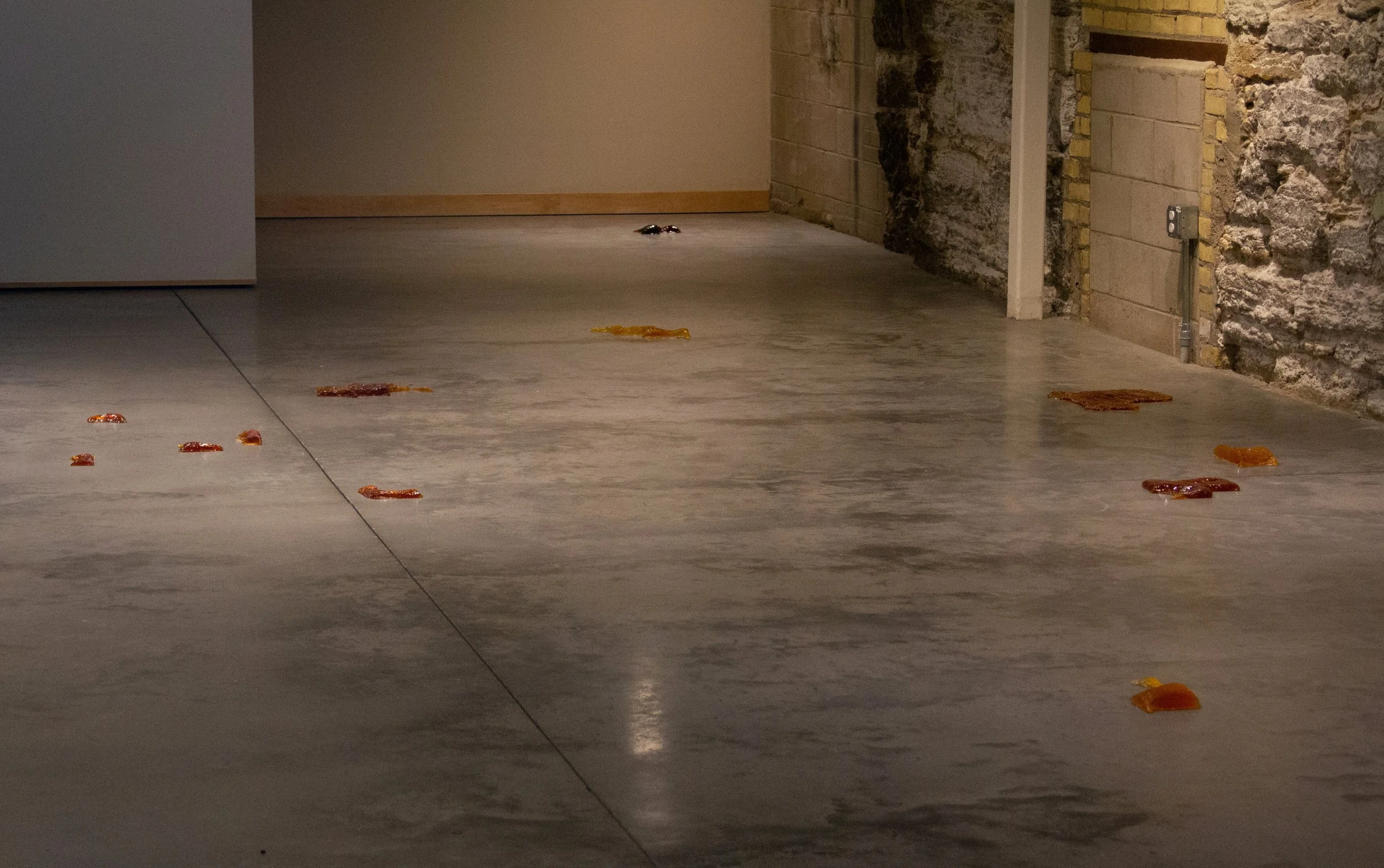
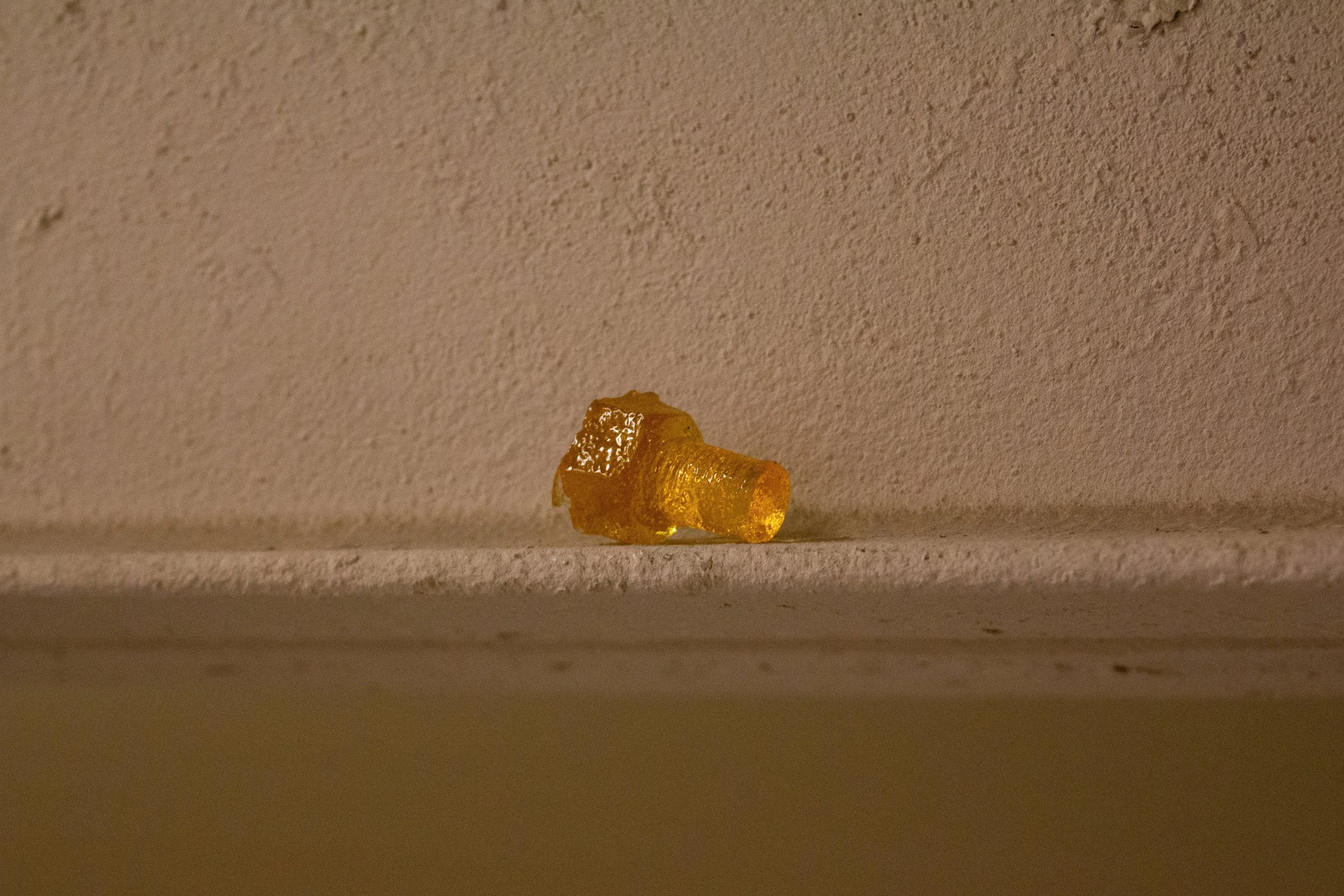

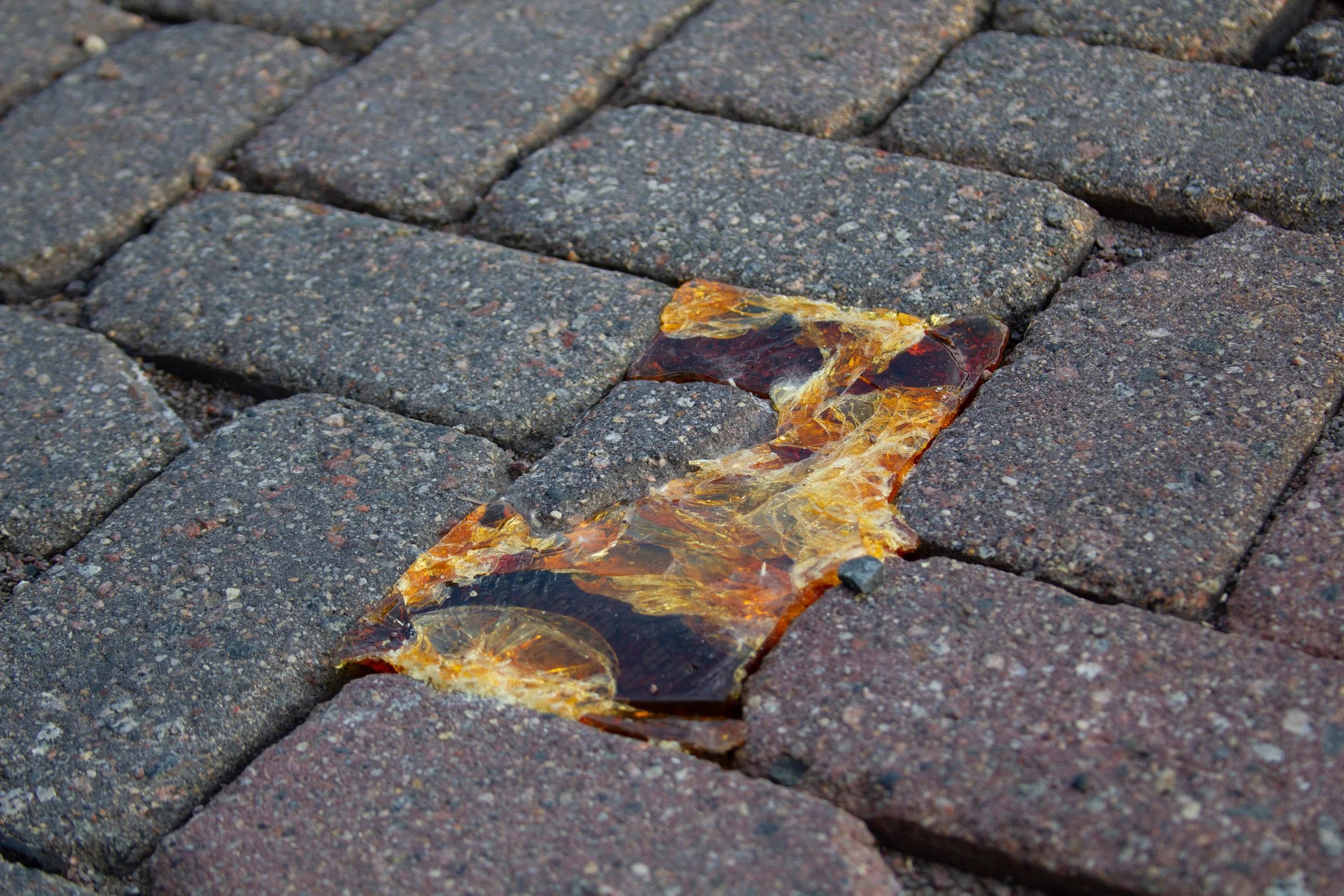
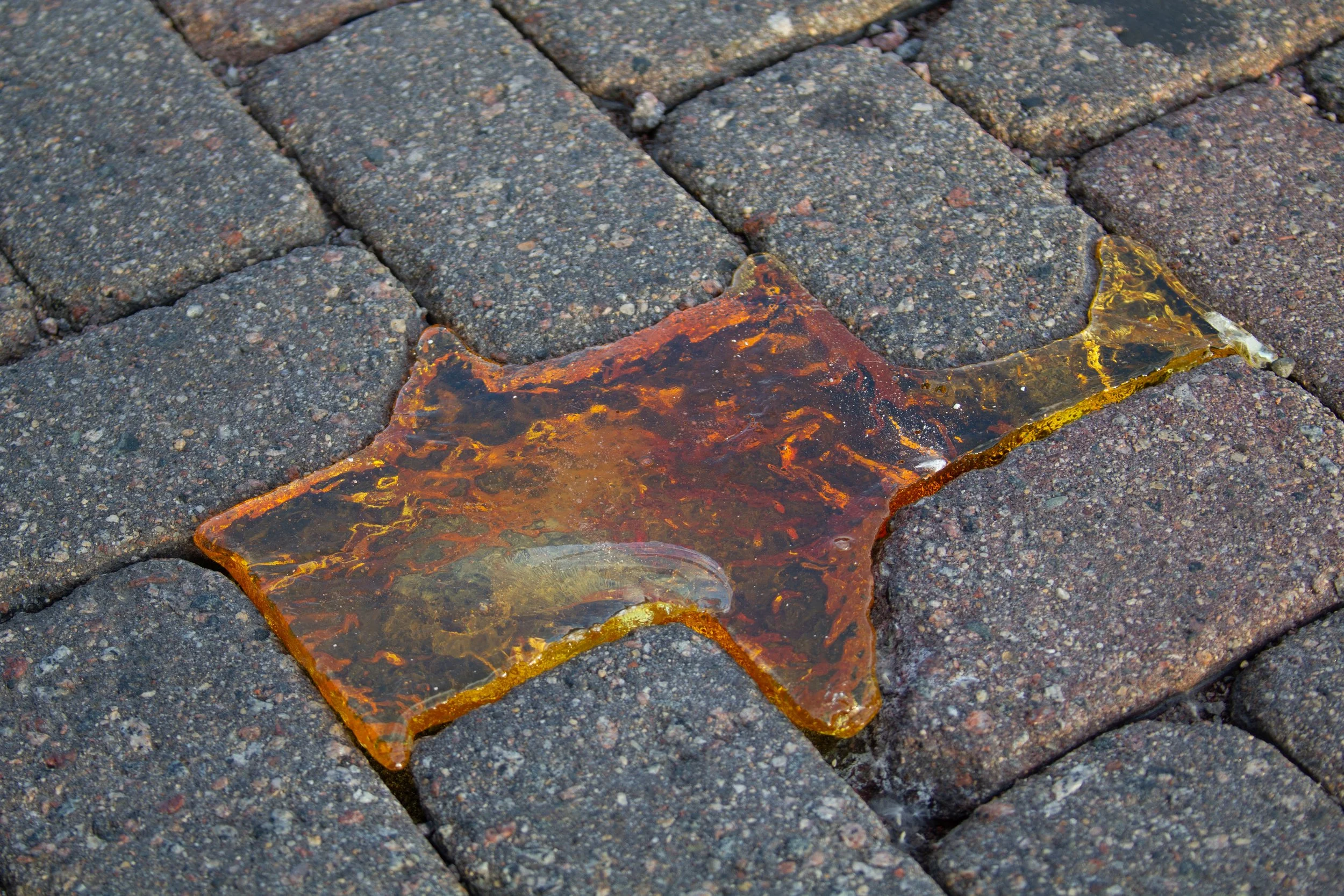

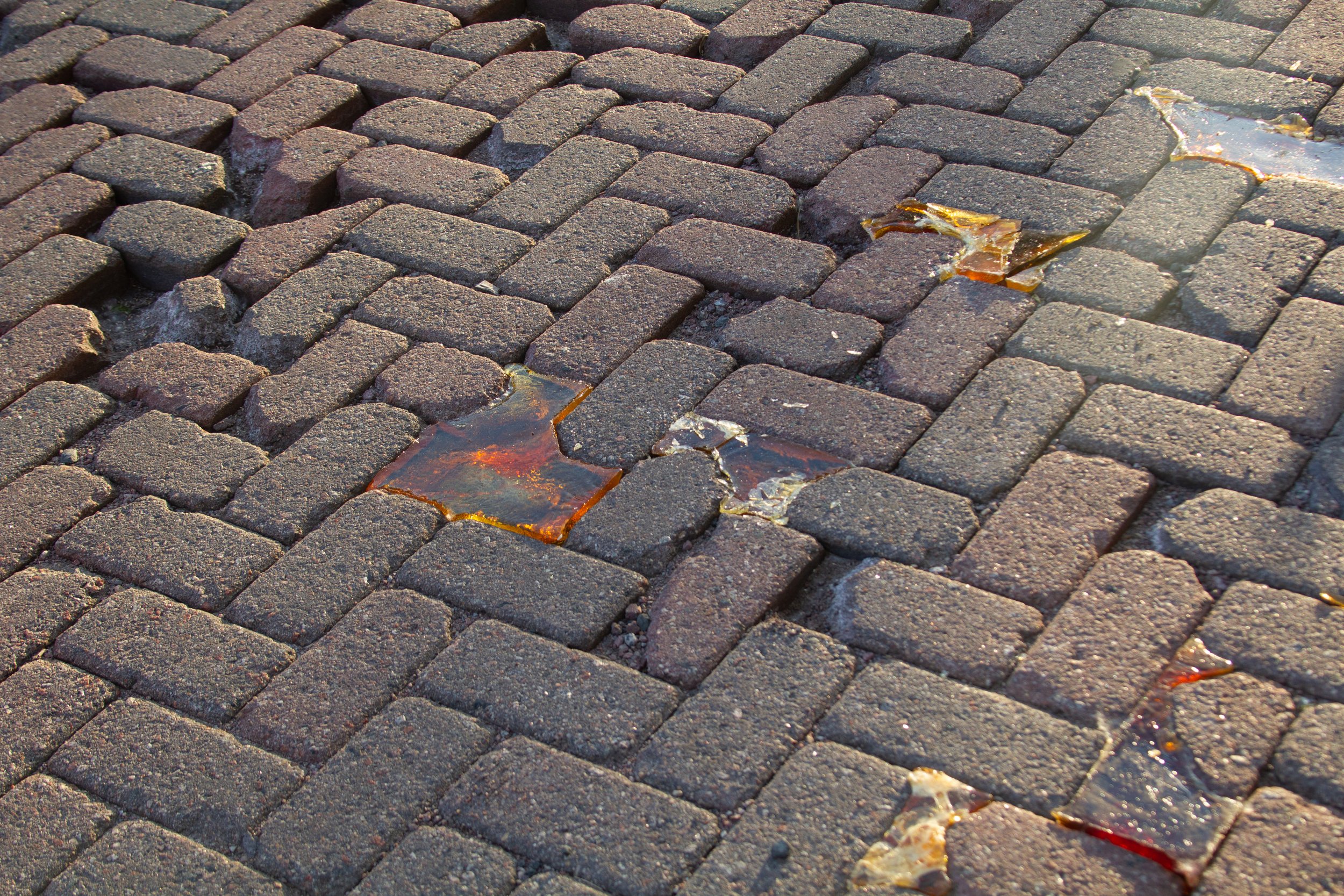
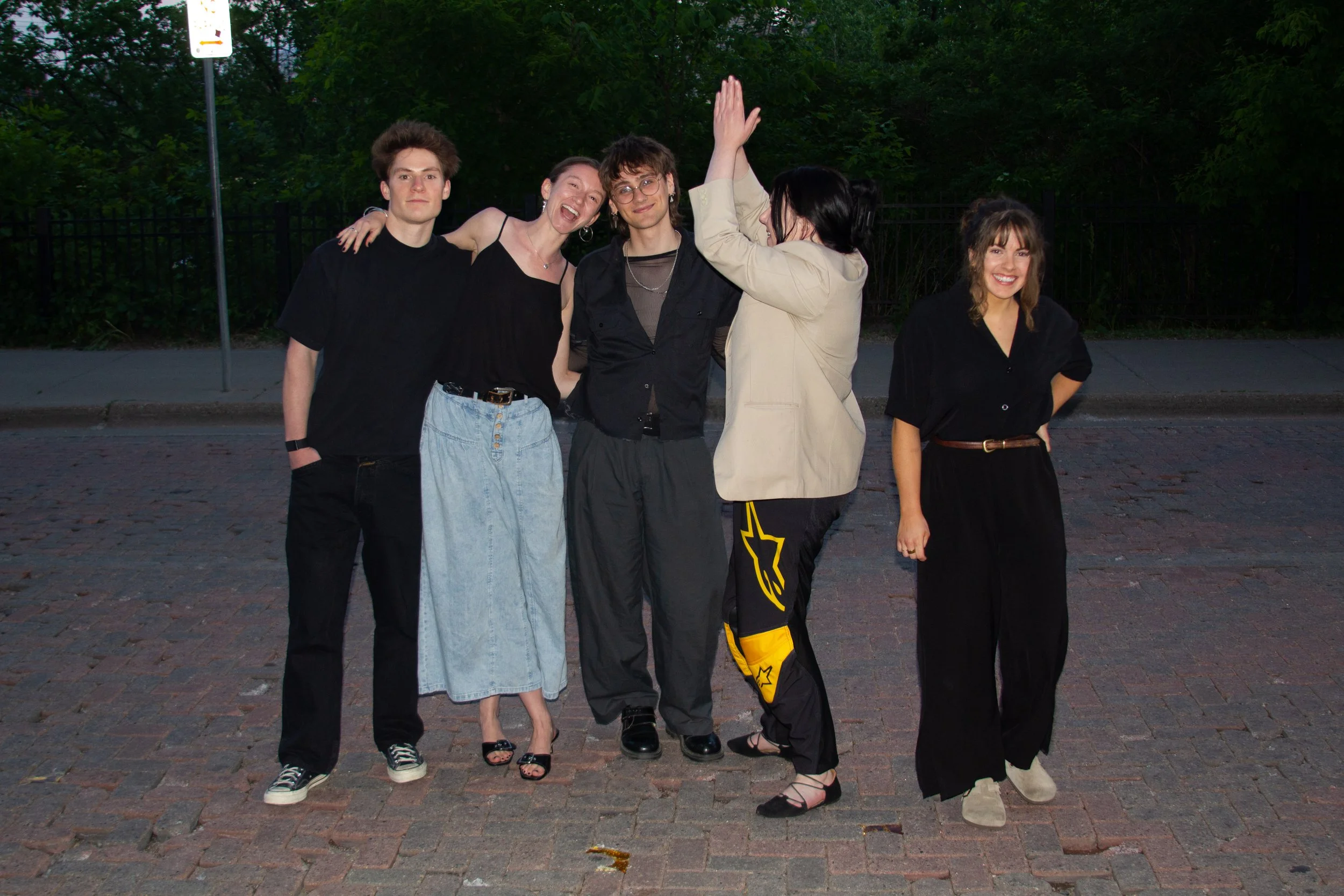

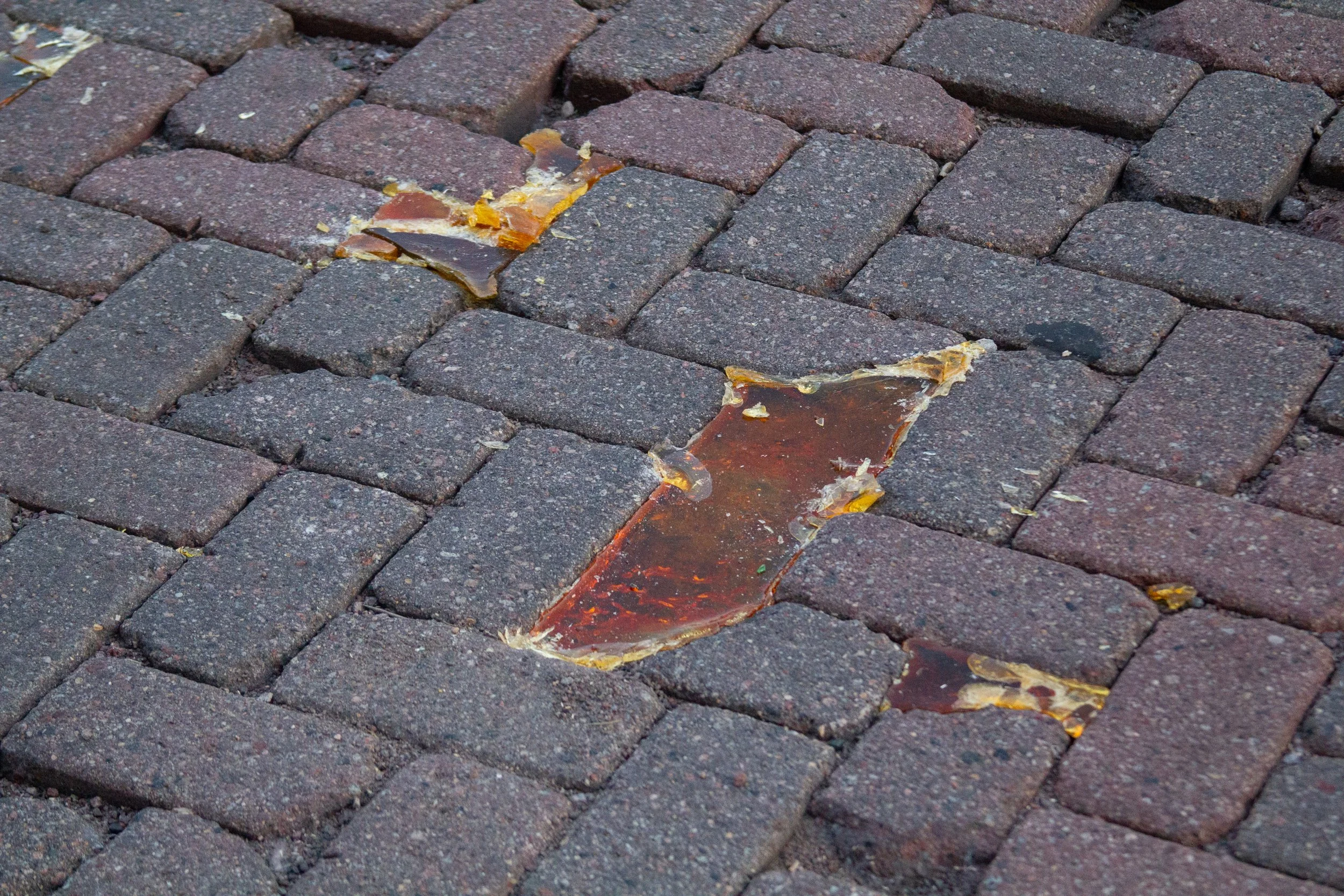
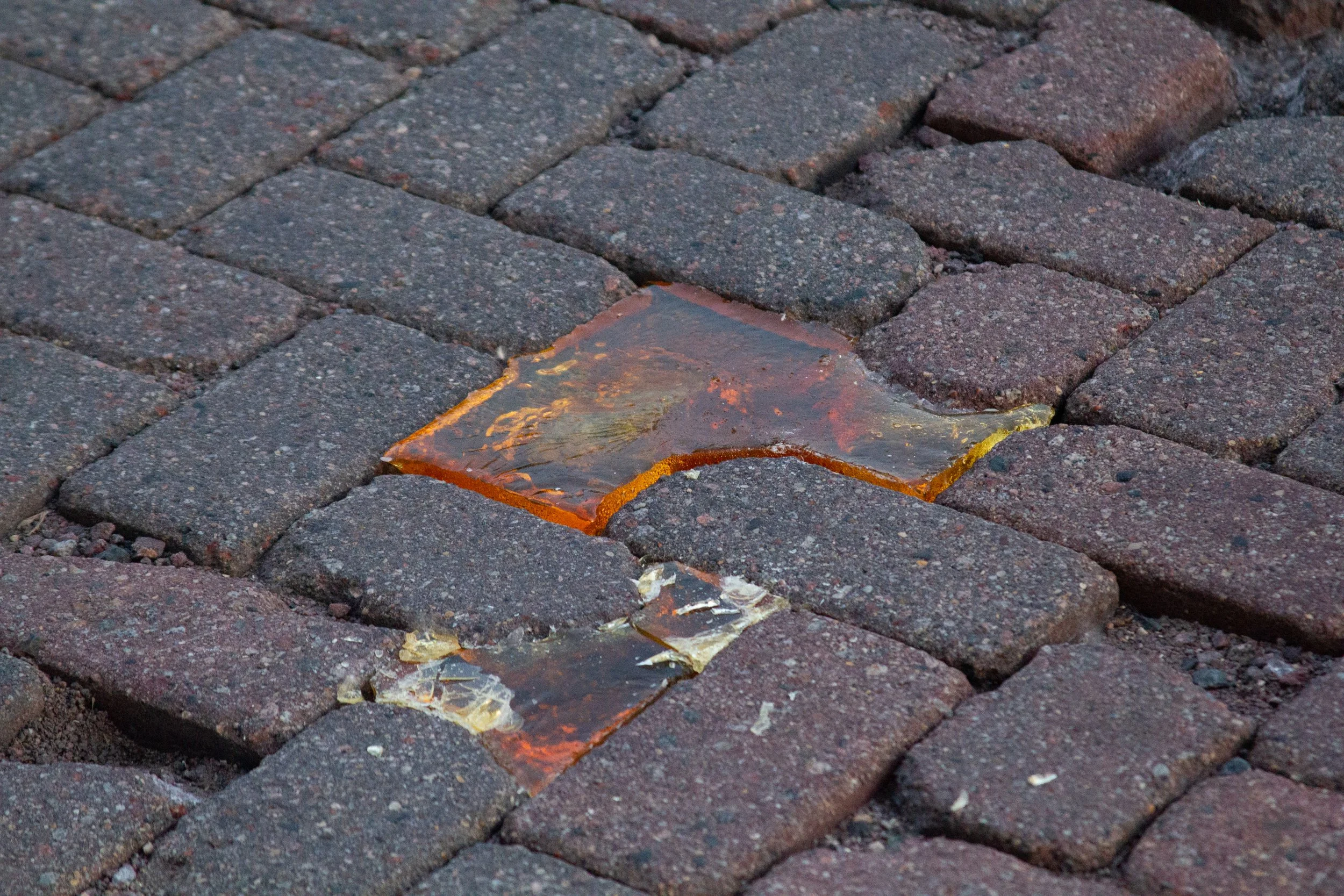

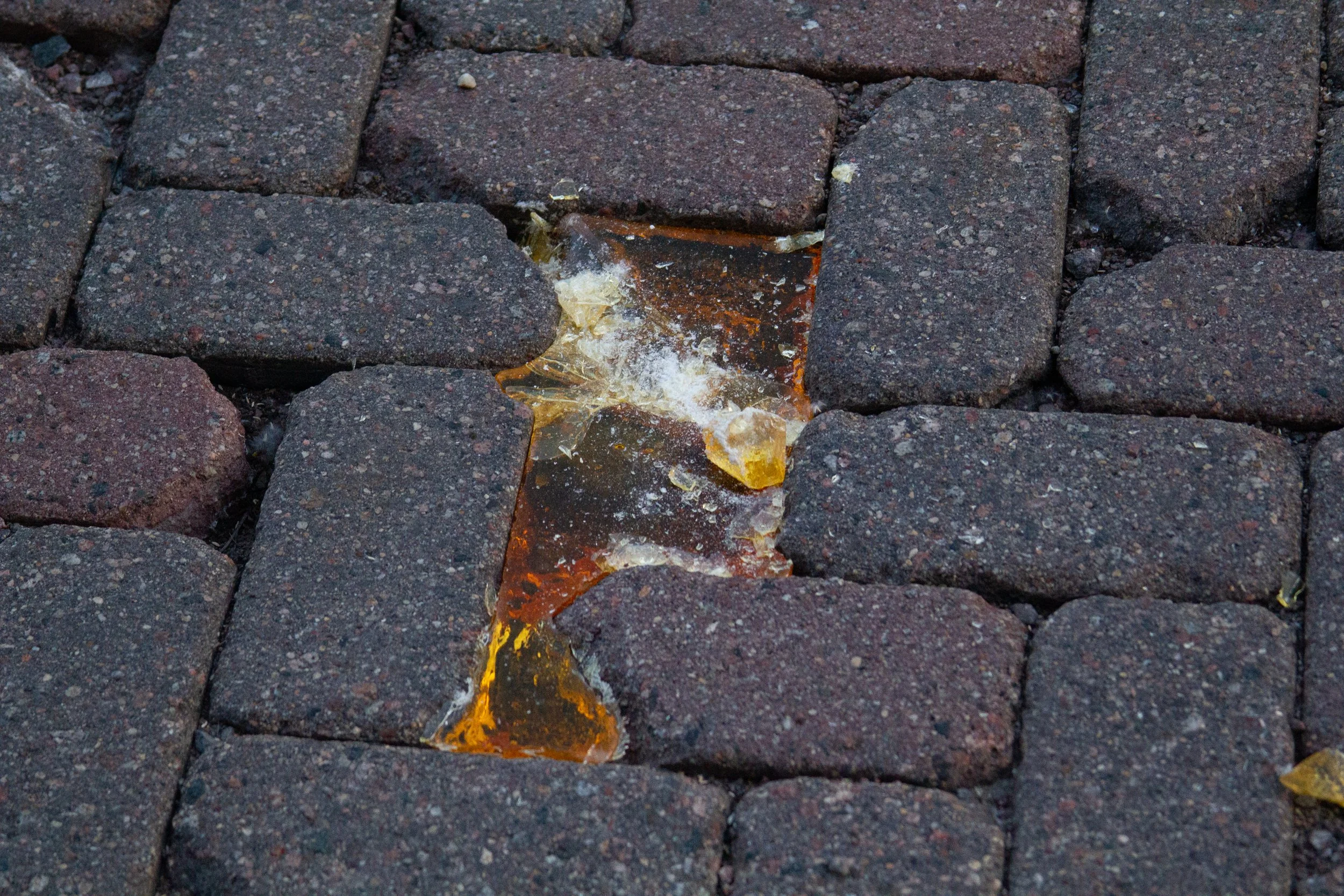
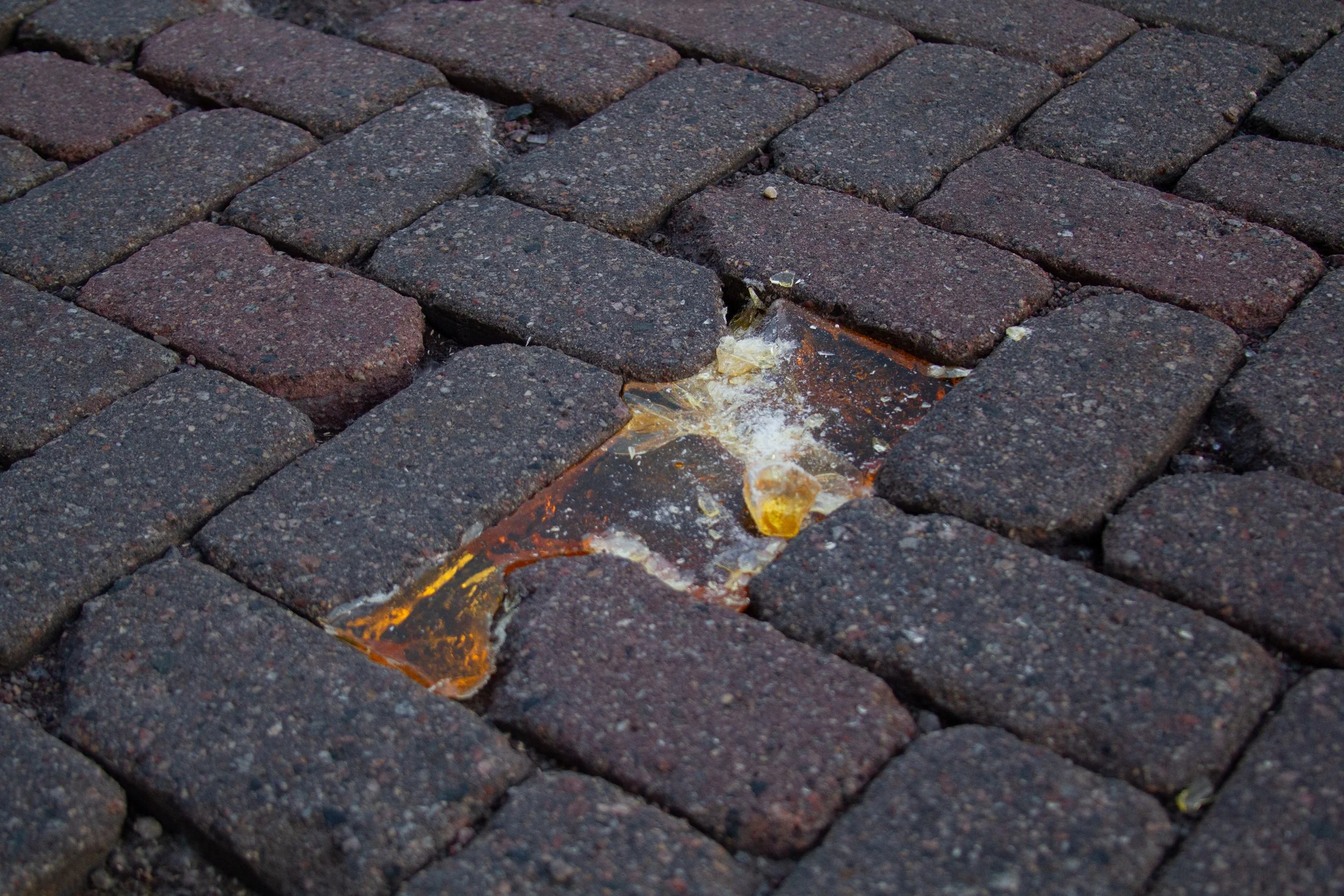
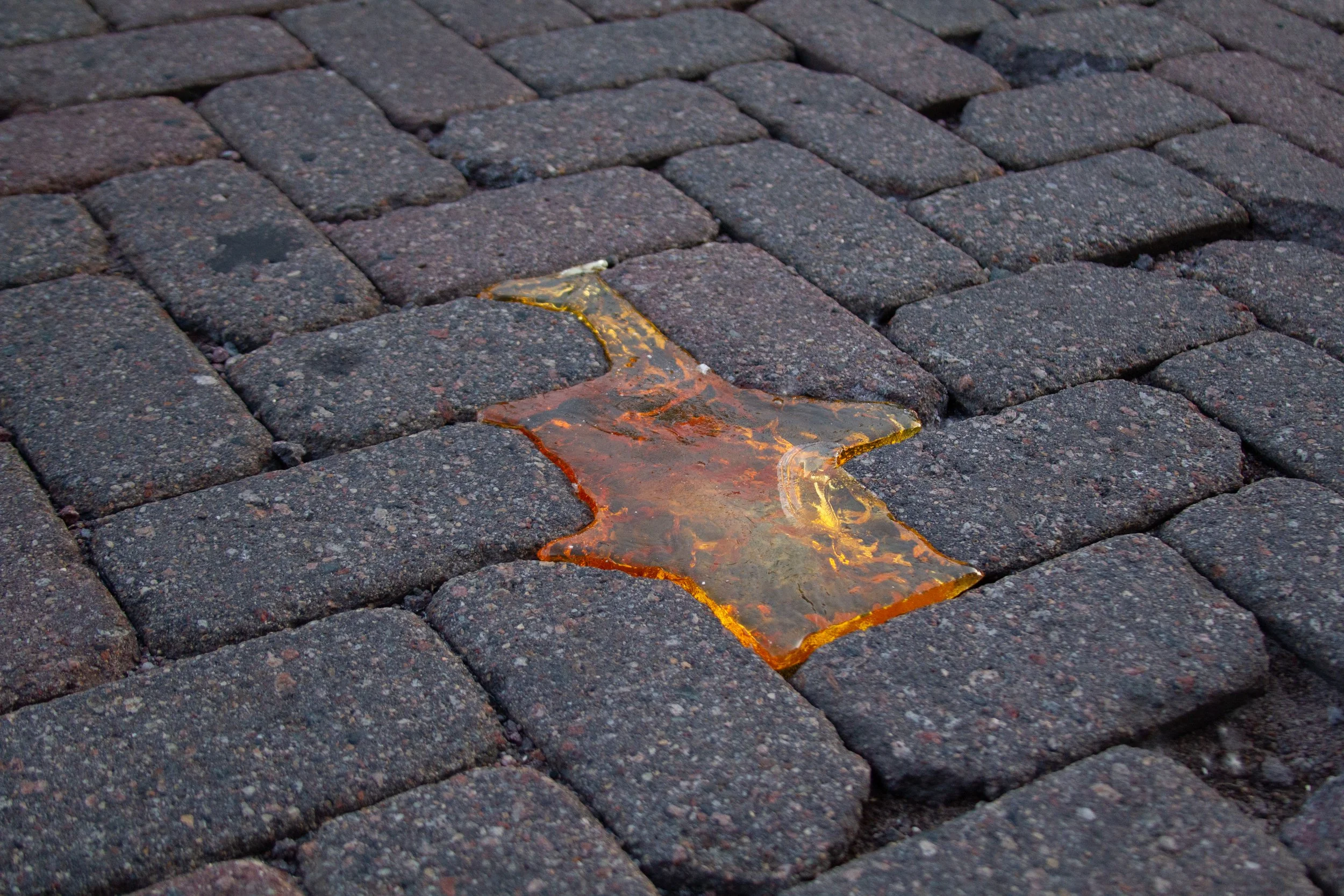


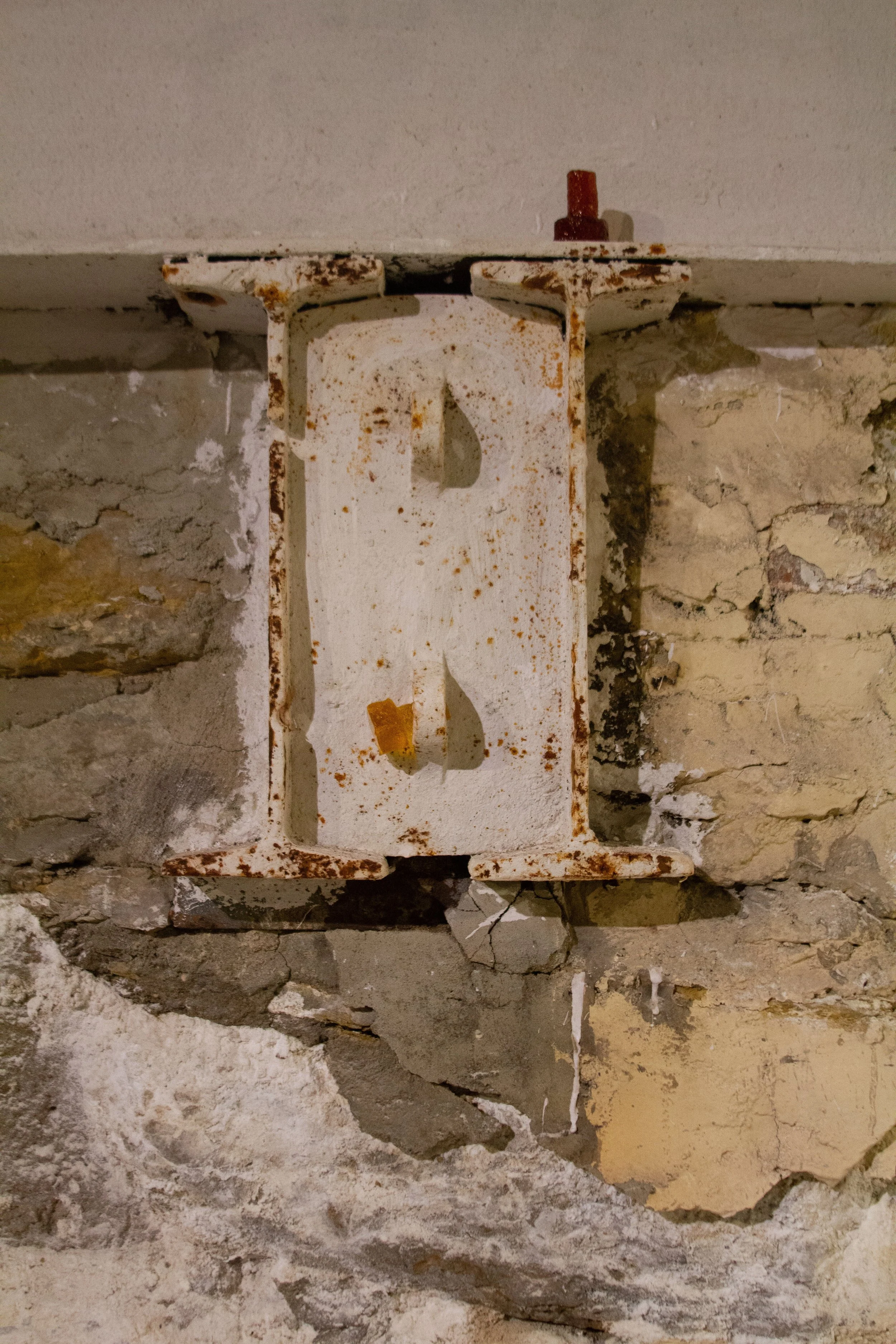


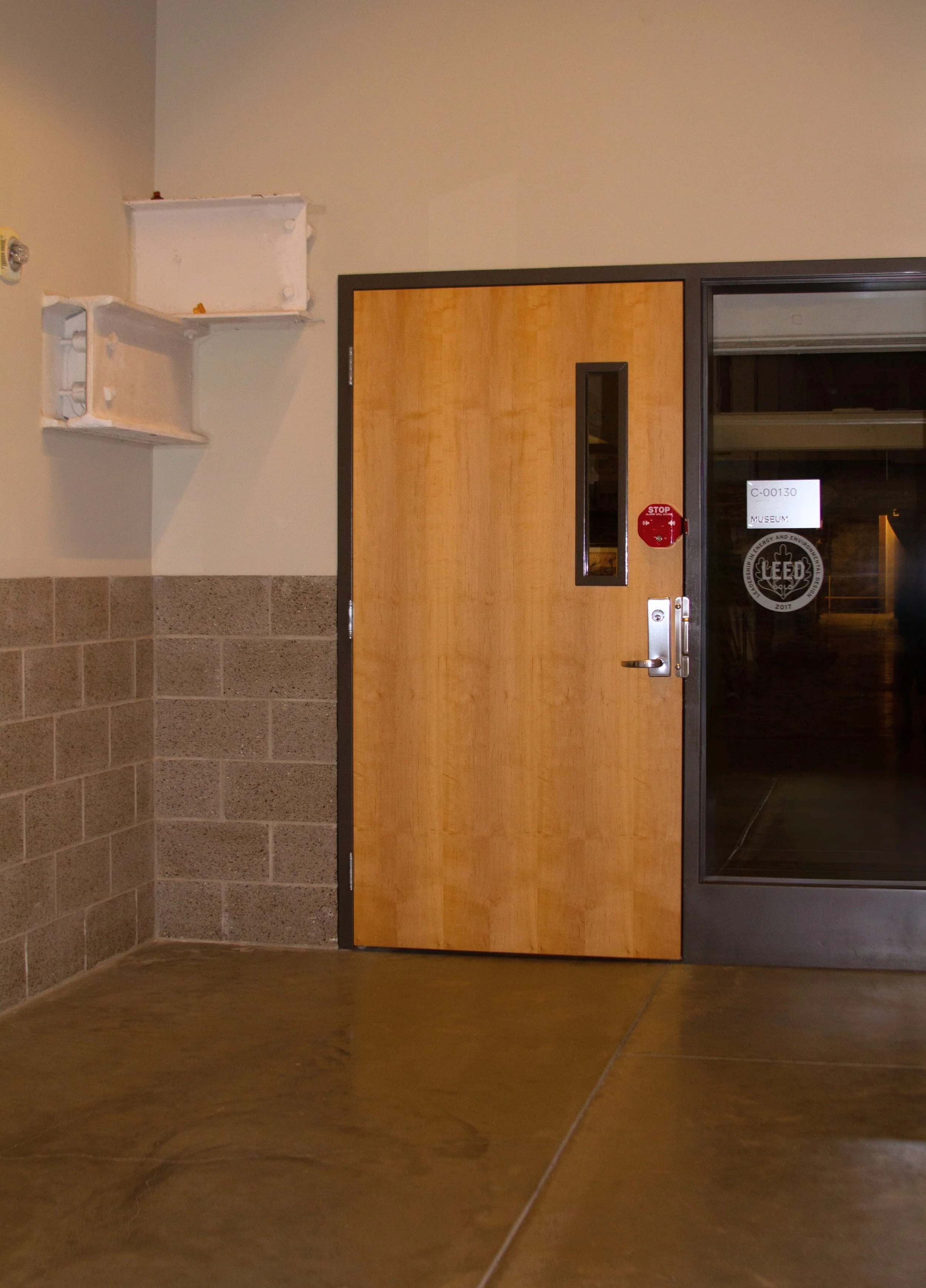
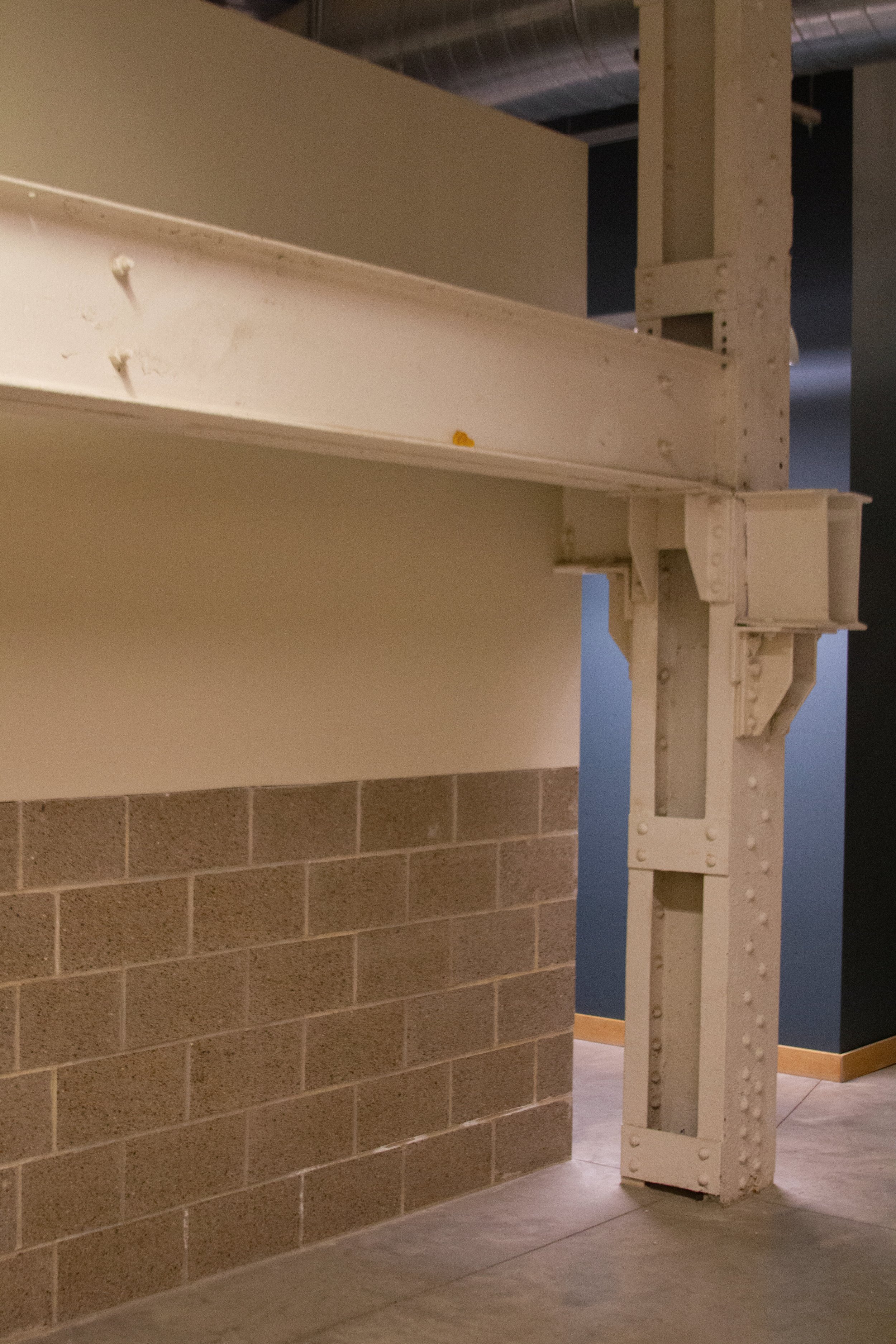
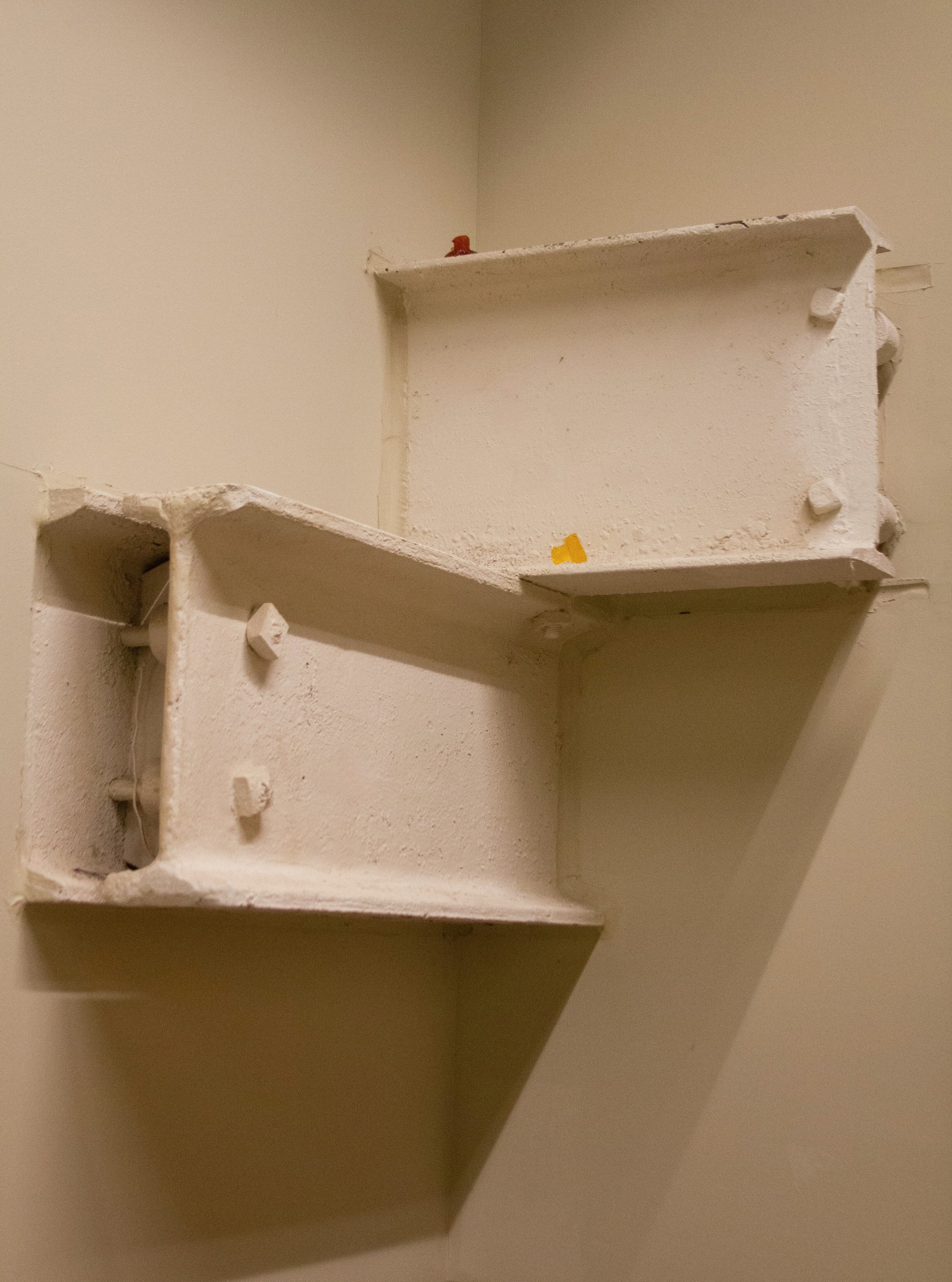
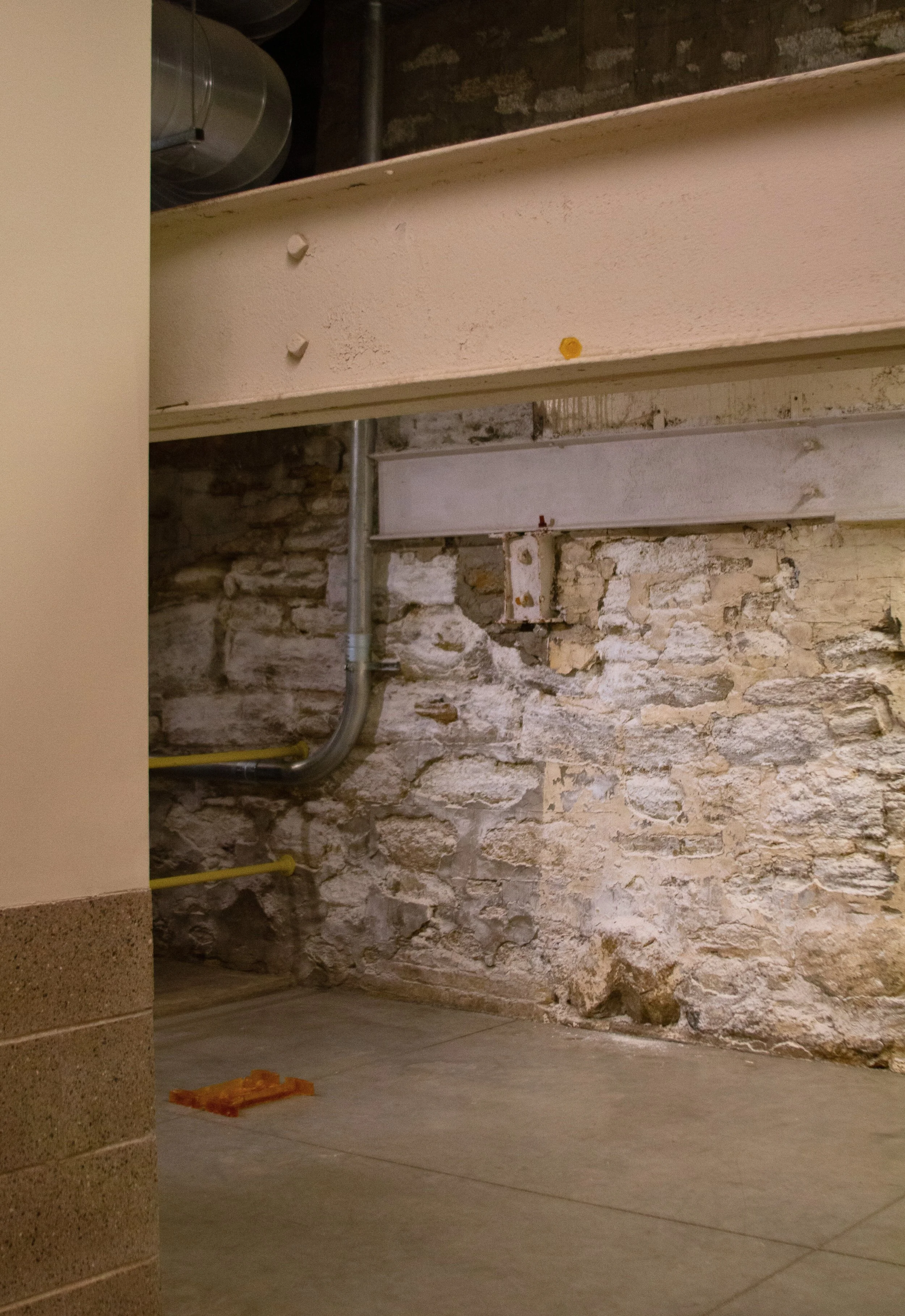
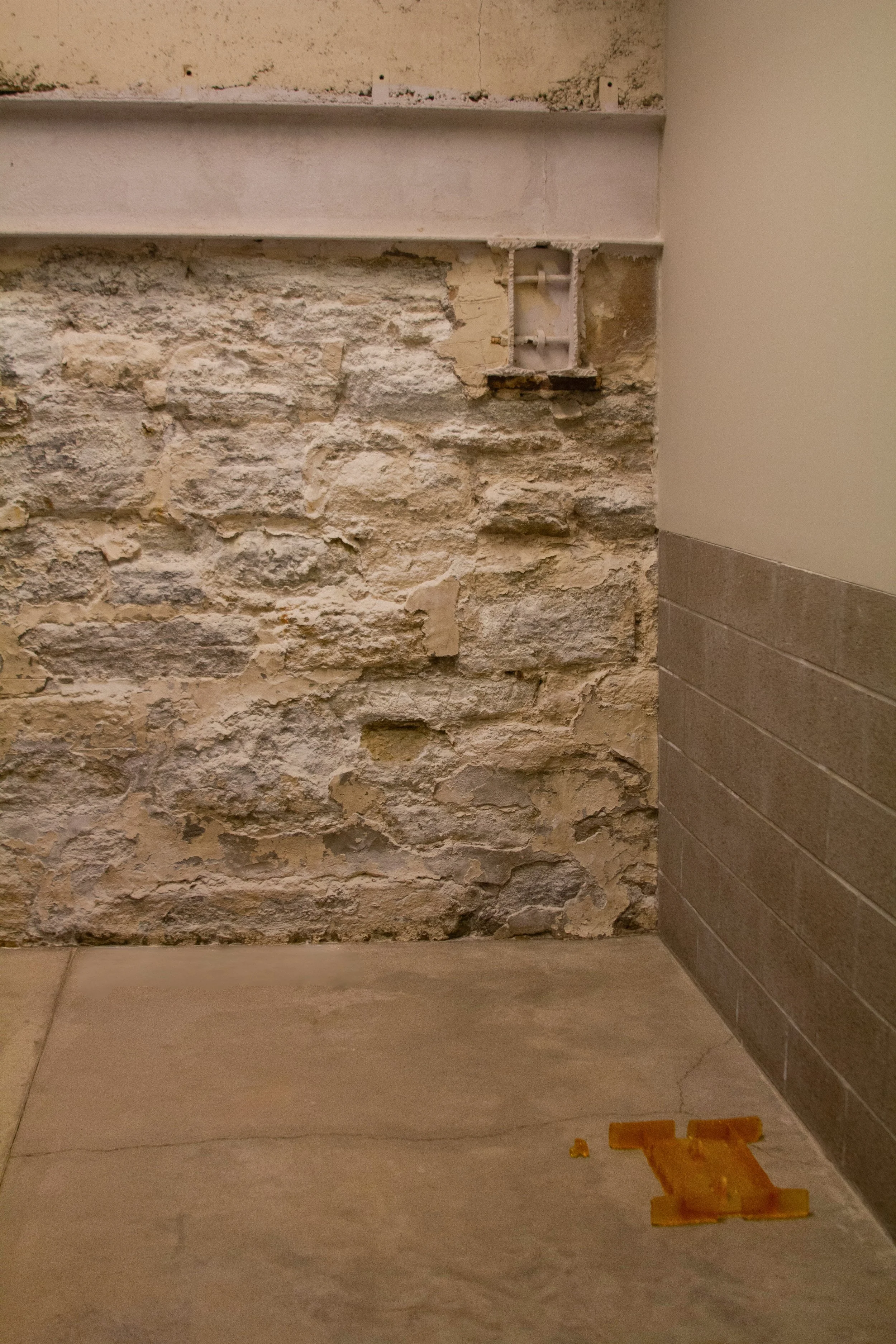
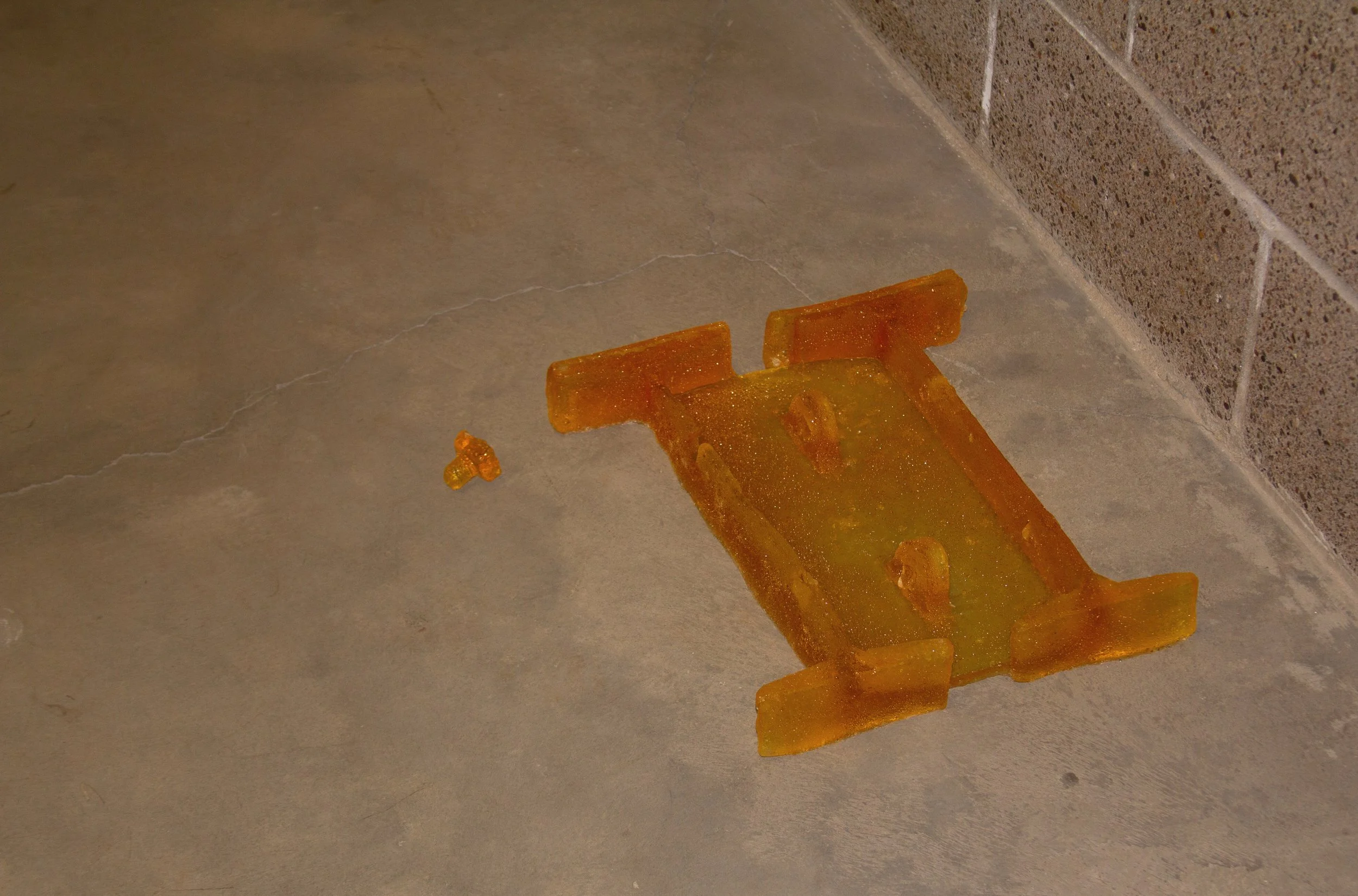

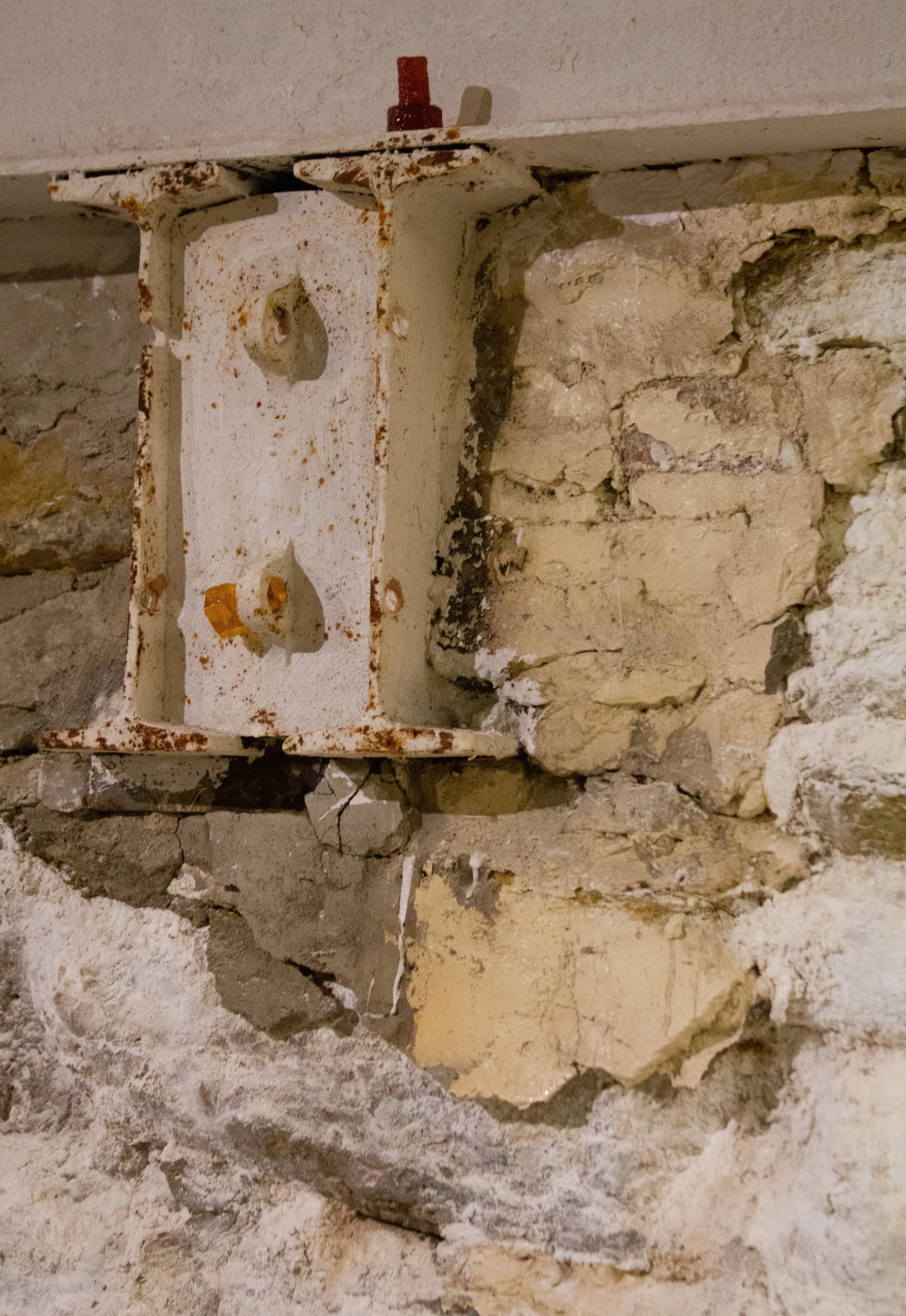



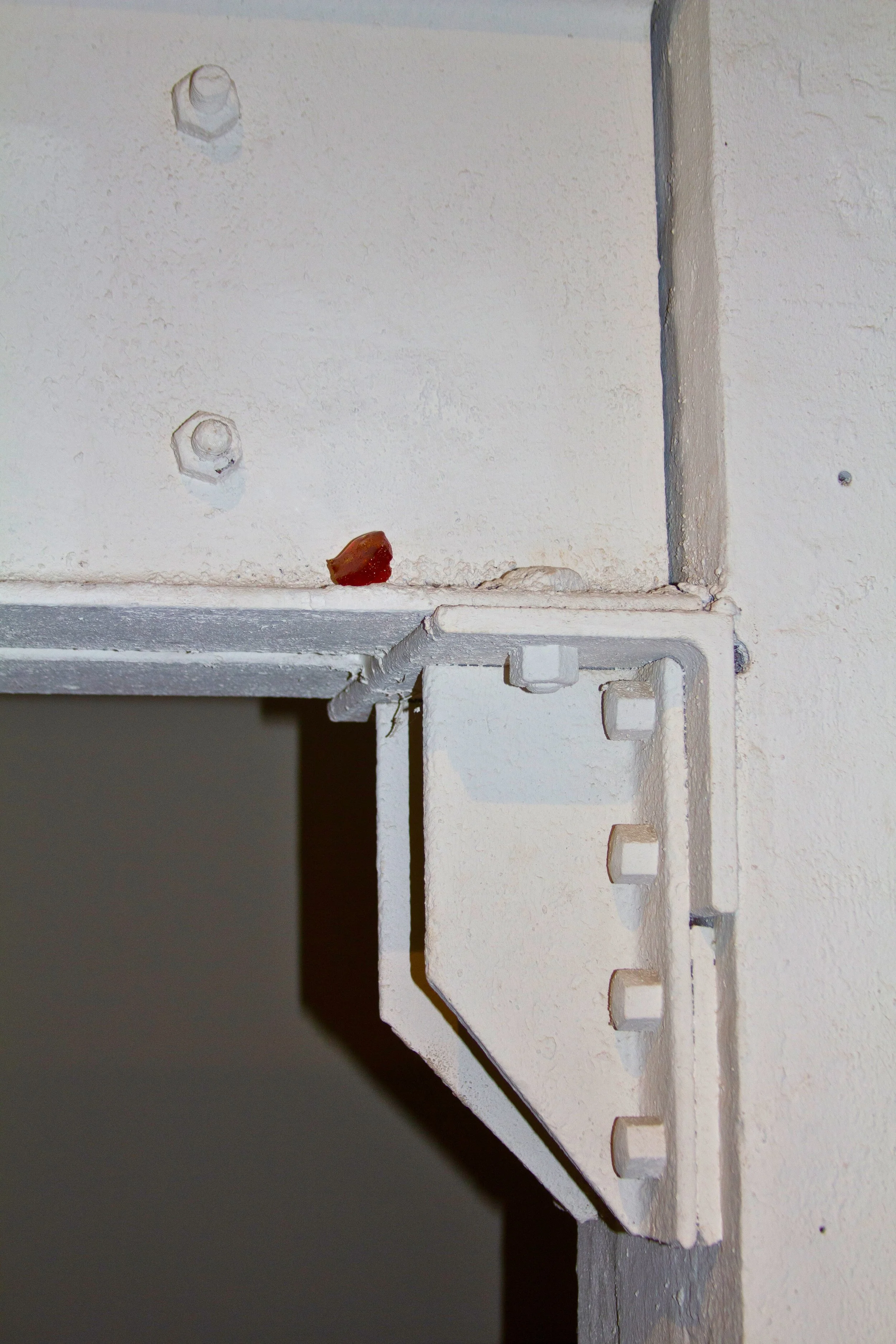



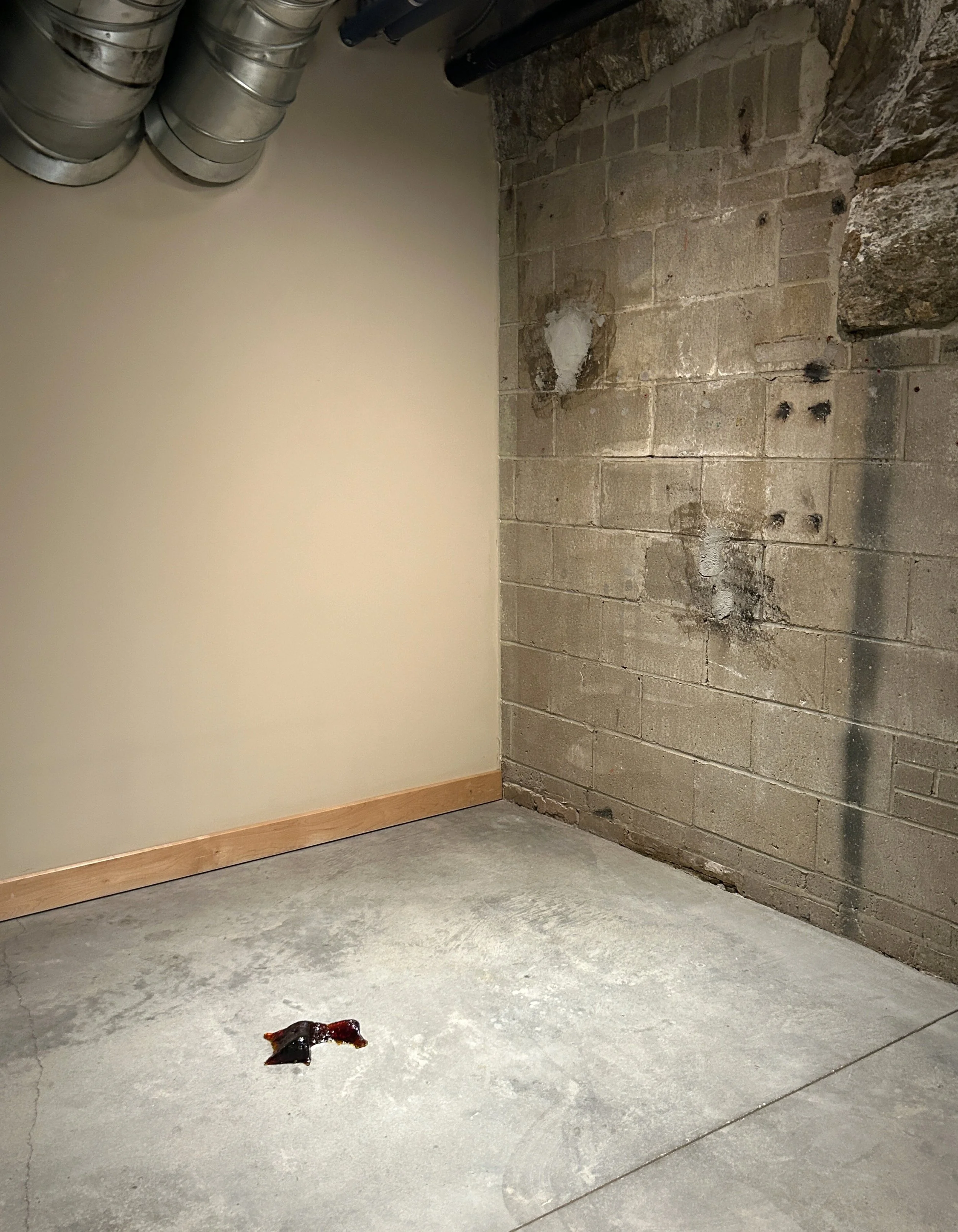

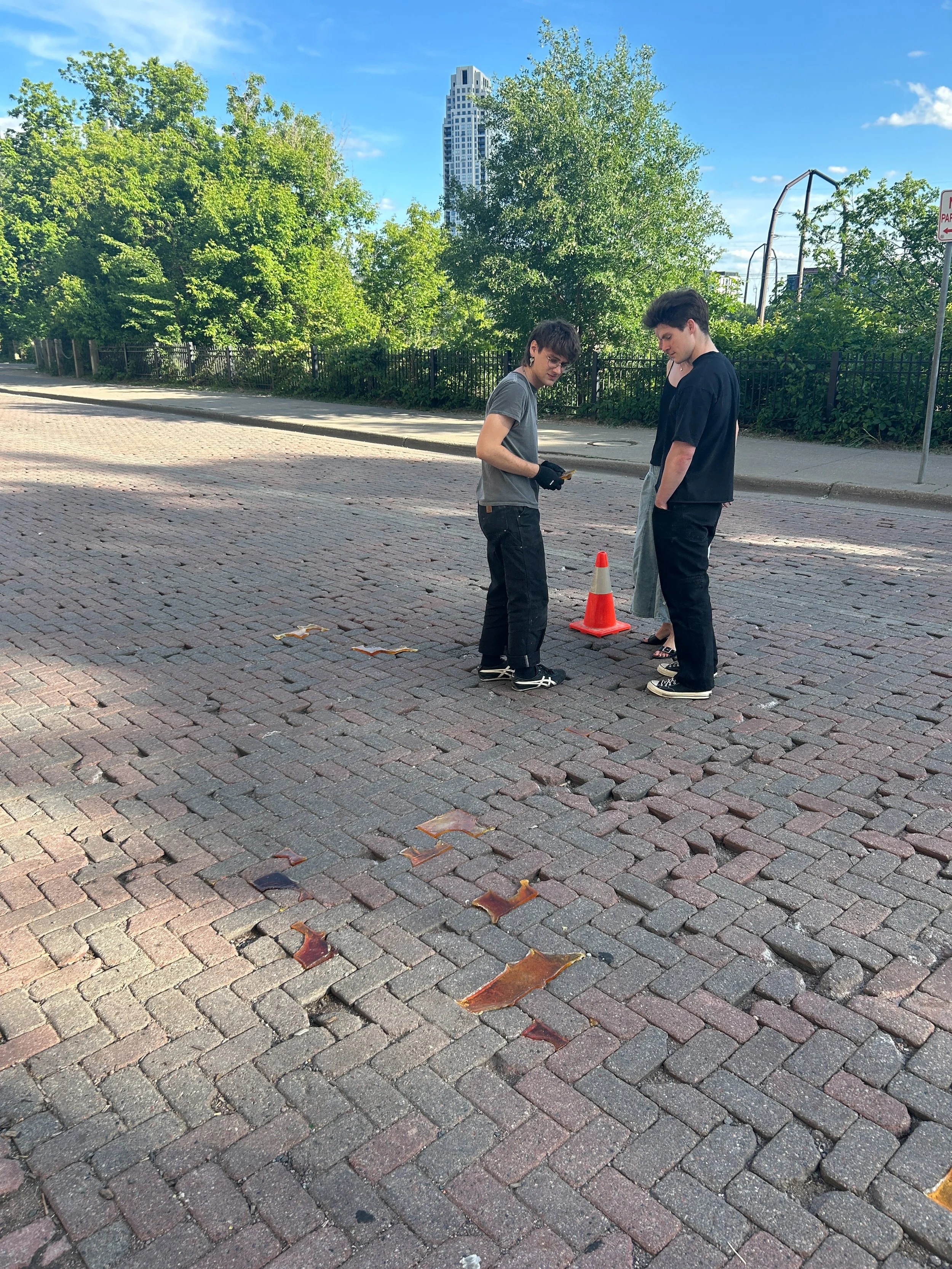

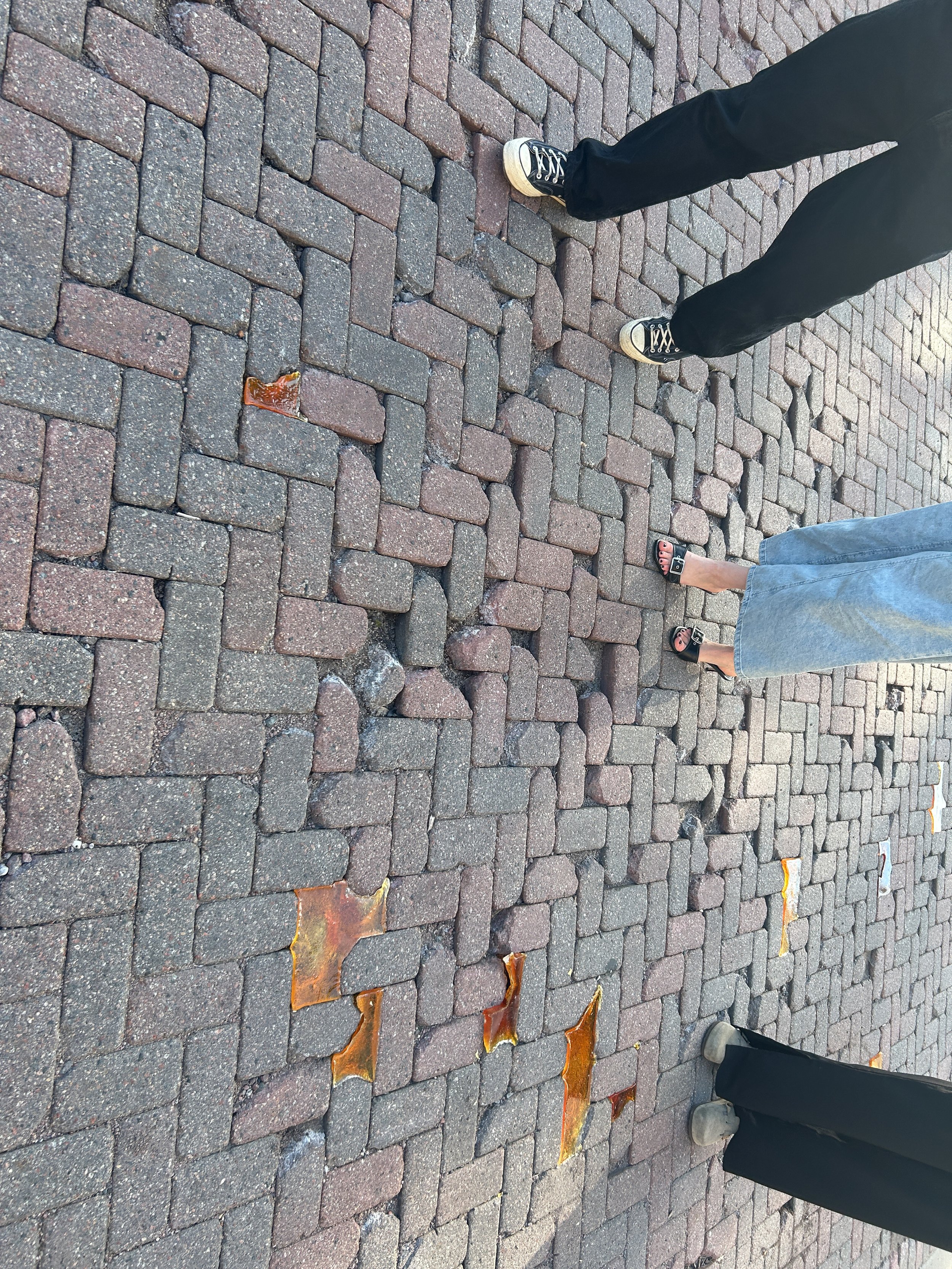
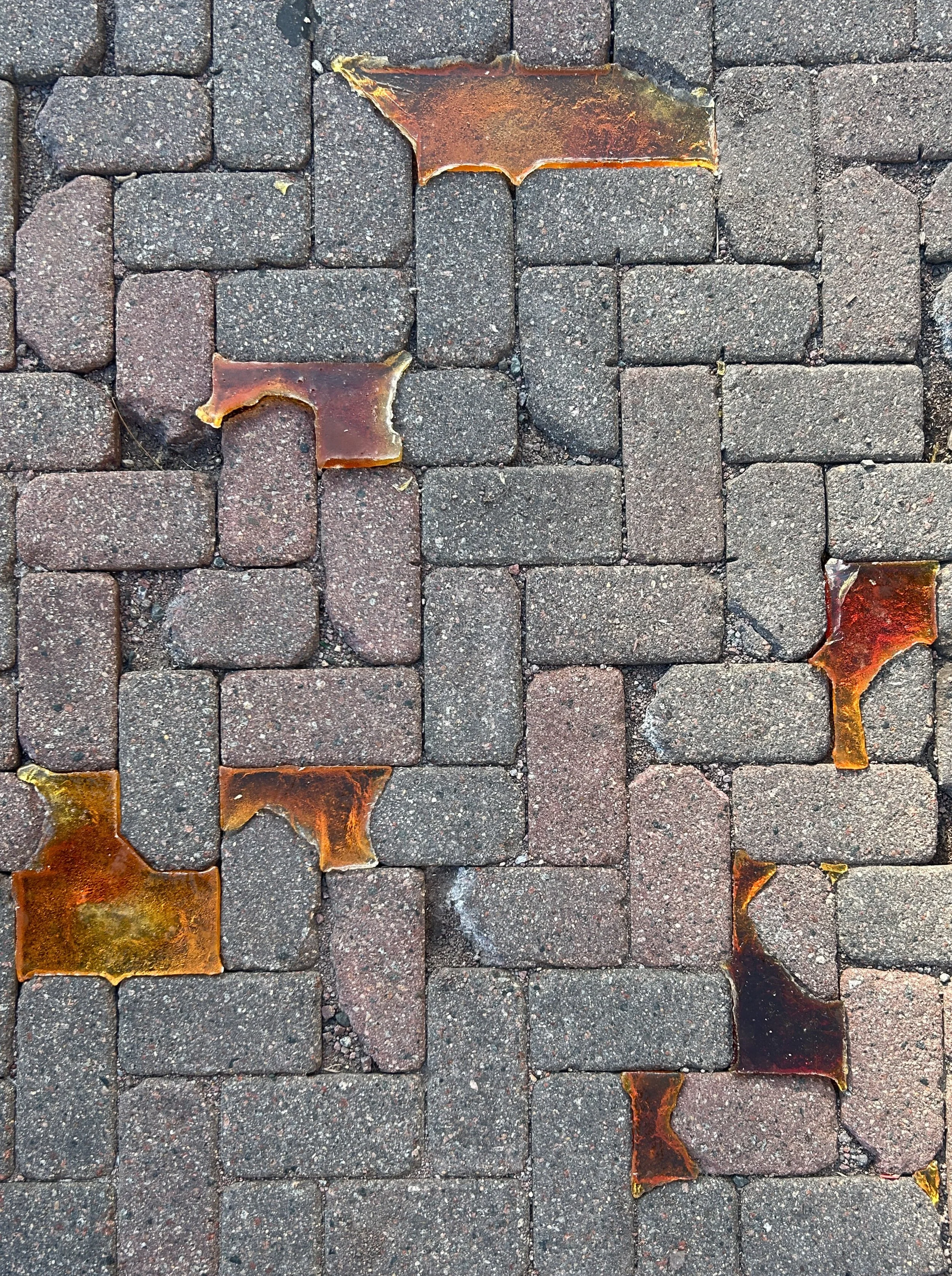

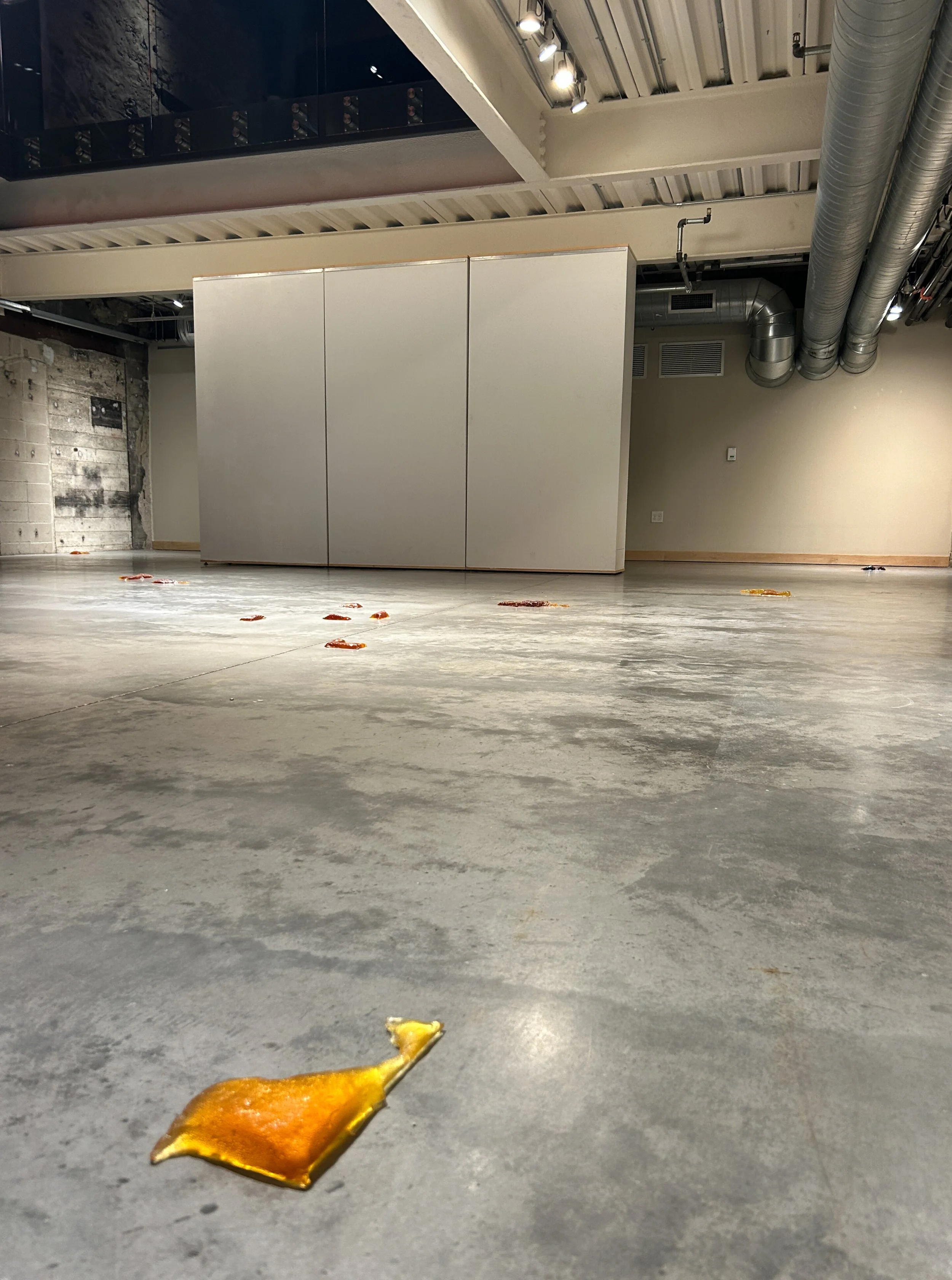

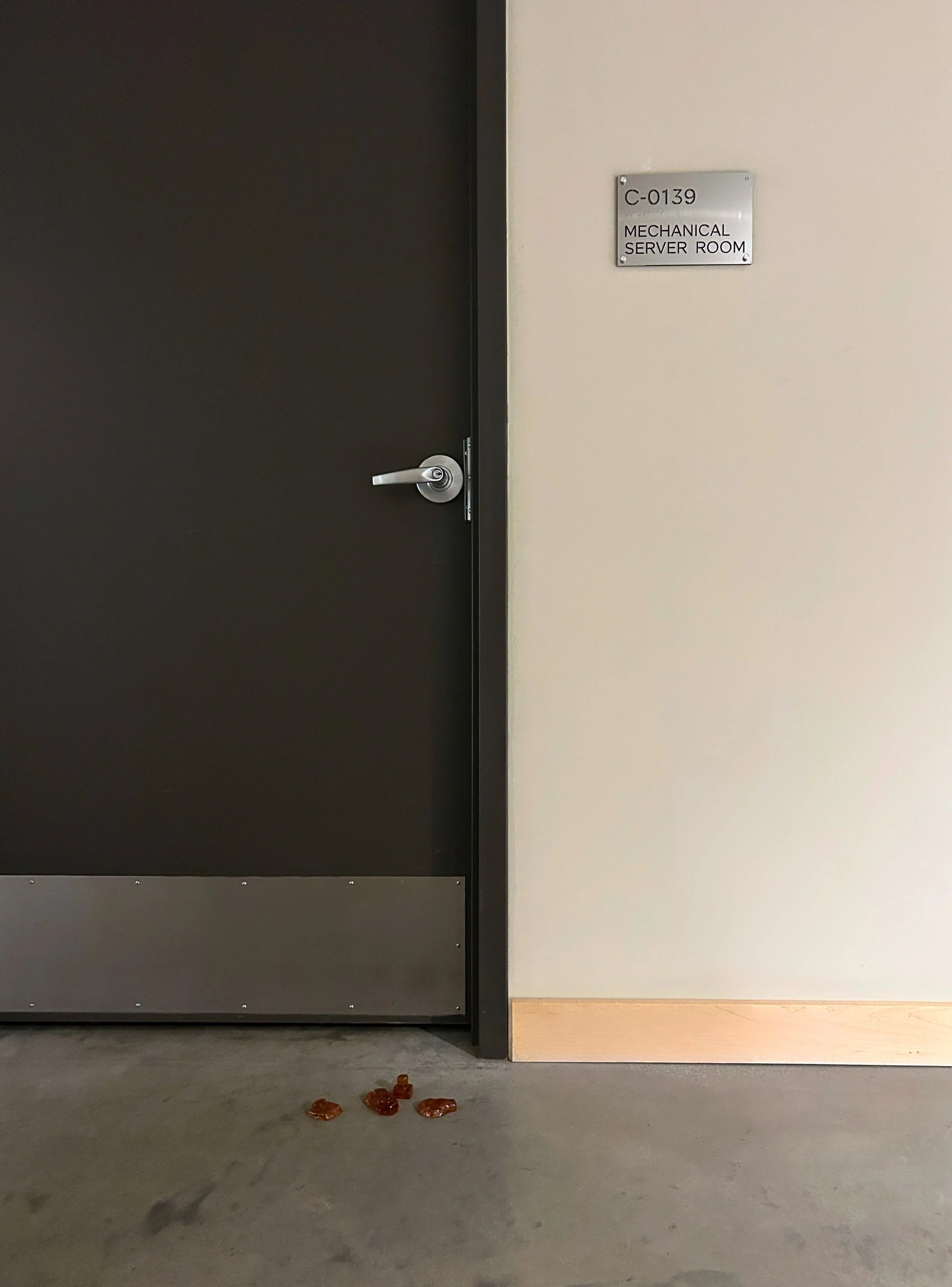
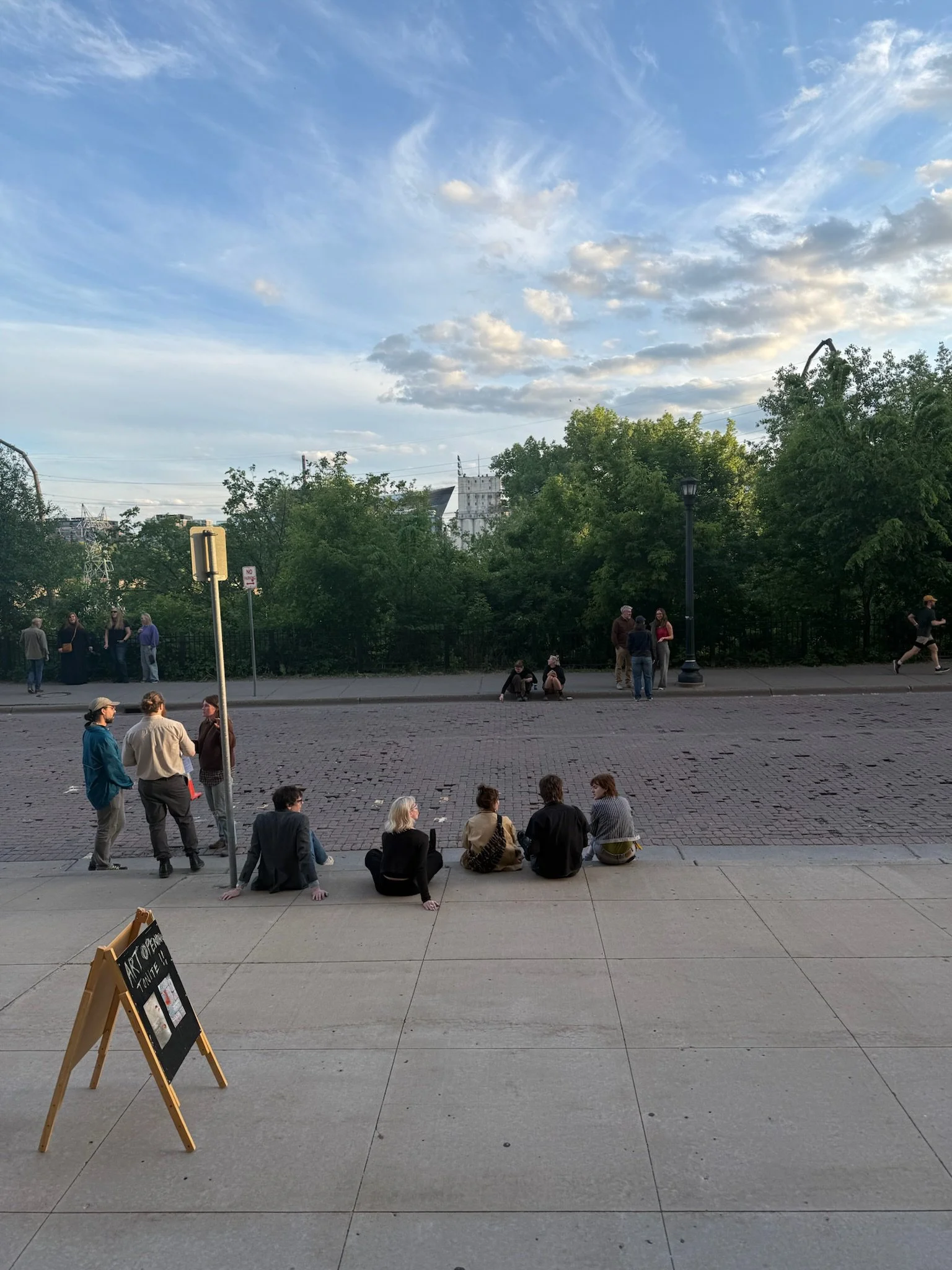

Joshua Anstrand’s highly ephemeral and site-specific solo exhibition TOMORROW PROBLEM engages with Minneapolis’ historic neighborhood Marcy Holmes, particularly through sugar-based sculptures cast from the recesses in the cobblestone streets and textures found within the former Pillsbury Flour Mill building. The installation is situated both indoors and outdoors, ultimately phasing the sculptures in and out of their original context and in turn, initiating conversation on historicity.
The cobblestones on Main Street are often romanticized for their likeness to that of a historic European city. Albeit, Main Street is not currently composed of cobblestones, but setts. These current setts replaced the original cobblestones in the 1980s after more than a hundred years of erosion and extensive use. The road today bears a similar appearance to the road that came before it, an intentionally convincing copy of the original. In circumspect, Main Street today is a simulation of a history– an ostensible repair of that said history. Here, Baudrillard’s theory of “Simulation and Simulacra” comes to mind; the so-called truth, and by extension, trust, of this increasingly simulated history becomes ever-so obscured, leaving us to question what meaning we can derive– if any.
As the current setts erode, leading to deep recesses in the street, years of industrial intervention begin to dissipate. In seasonal change, with the freezing and thawing of the dirt beneath the street, the setts are slowly pushed out, not dissimilar to the body trying to reject a deeply-embedded sliver. As the “simulation” of the original road is failing, belief in its authenticity starts to fade. In turn, one begins to question the virtue-signaling and self-aggrandizing efforts of industry and capitalist leaders that continue to glide on cheaply saccharine efforts of maintaining a certain history.
Furthermore, the ephemeral duration of the exhibition and the material utilized further accentuate the idea of a “tomorrow problem.” Pure sugar, addictive in nature and only a temporarily rewarding fix, offers up an impotent solution to a larger issue. It’s an answer for today, leaving the hard work as a “tomorrow problem.” However, the day of reckoning never comes, or at least not in the minds of those who ceaselessly administer such ignorant and ultimately ineffective work. In a way, Anstrand’s exhibition acts as a sort of performance; a parody of the alleged virtuosity within industrial interventions.
Phasing in and out of original context, an entropic landscape is noticed; an undulating palimpsest toils with the idea of what told history is true and what history is not. Anstrand not only critiques the area’s history, but ultimately, historicity at large, addressing ideas of erasure, gentrification, and materiality in relation to industry, capitalism, and how it has failed. While the approach is not proselytizing, it catalyzes audiences to question the told, and ostensibly legitimized history around them.
Anstrand’s initial molten sugar project began in 2023 as a more abstract and abstruse ideation; filling random potholes throughout Minneapolis directly with molten sugar. After many non-site specific public installations, the artist began to conceptualize working in specific locations. Through further conversations with the gallery, it was proposed that the Marcy Holmes neighborhood would be an apt location to probe a particular paradigm of history.
Keeping in mind, this is only one critique of foretold histories in the area; we ask you to walk through both the exhibition and the neighborhood, reading the informational signage but also questioning what history is relayed and what history is not.